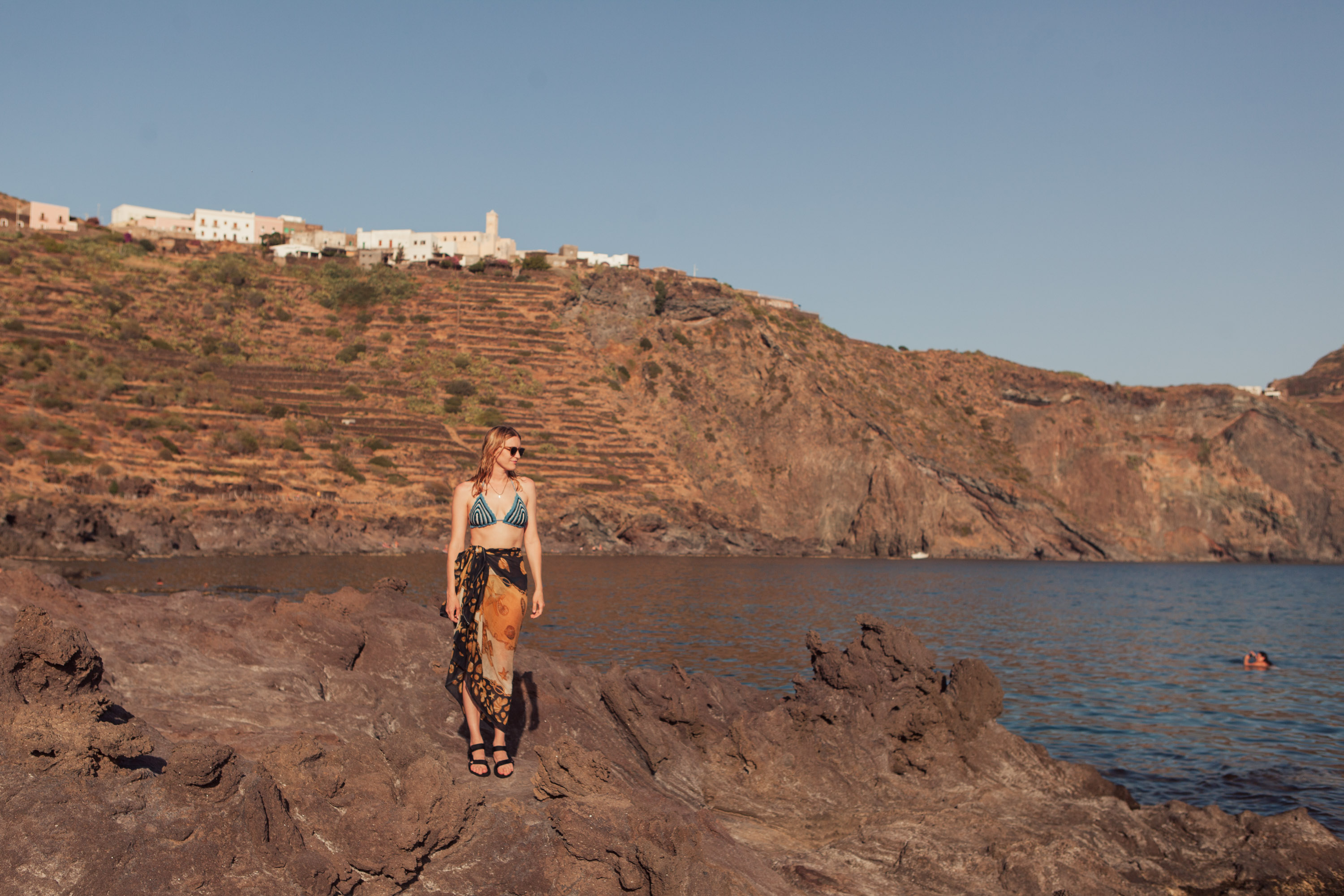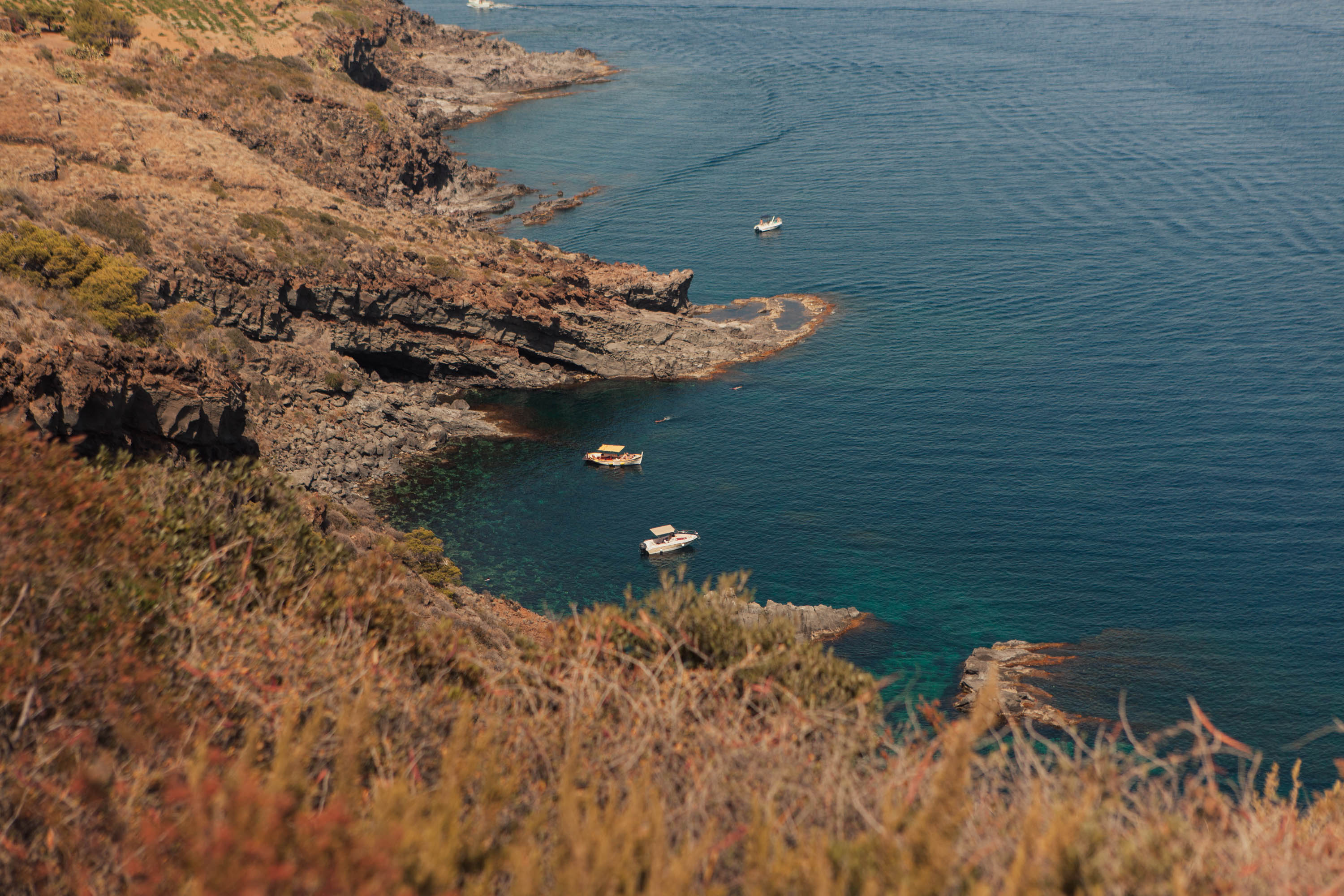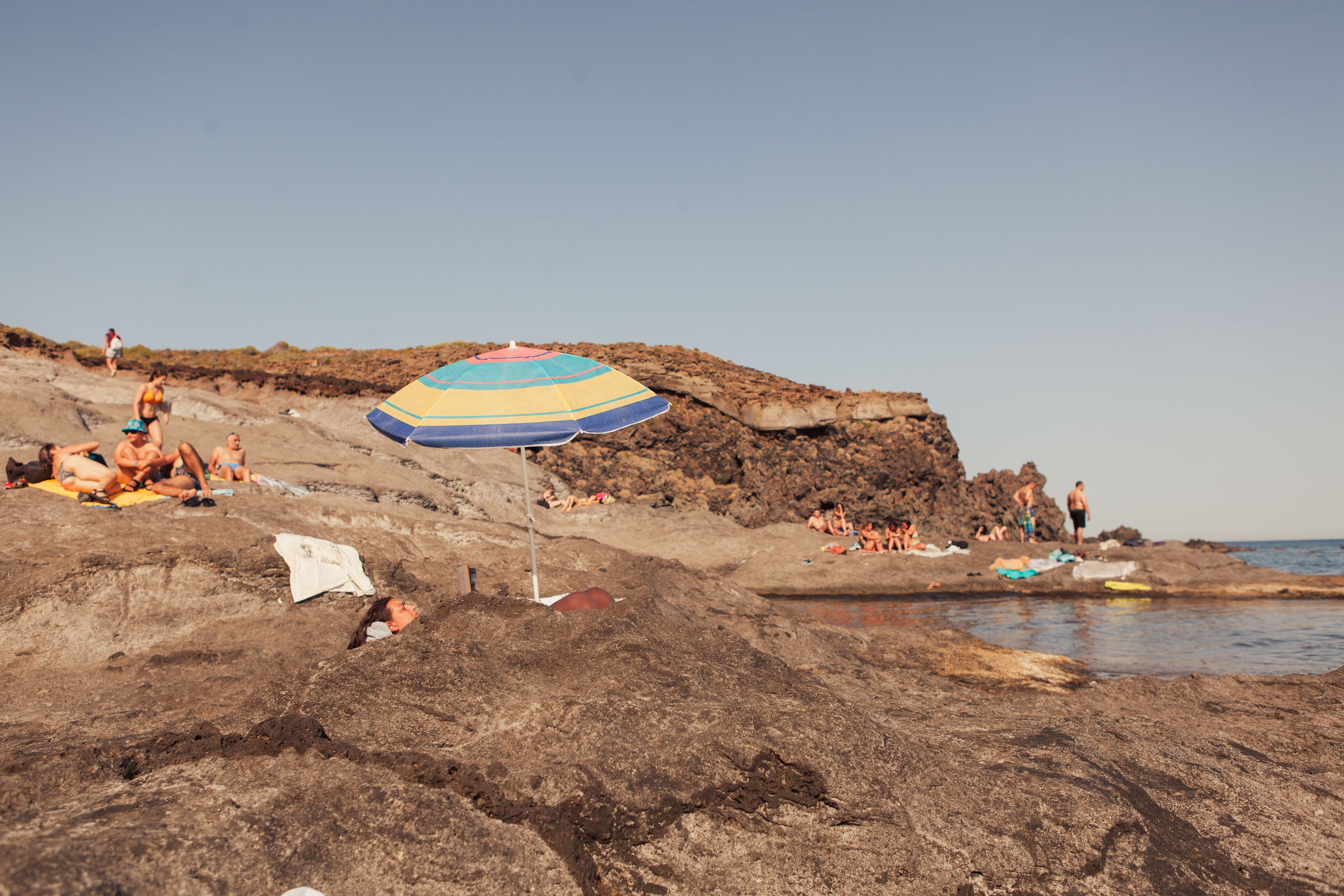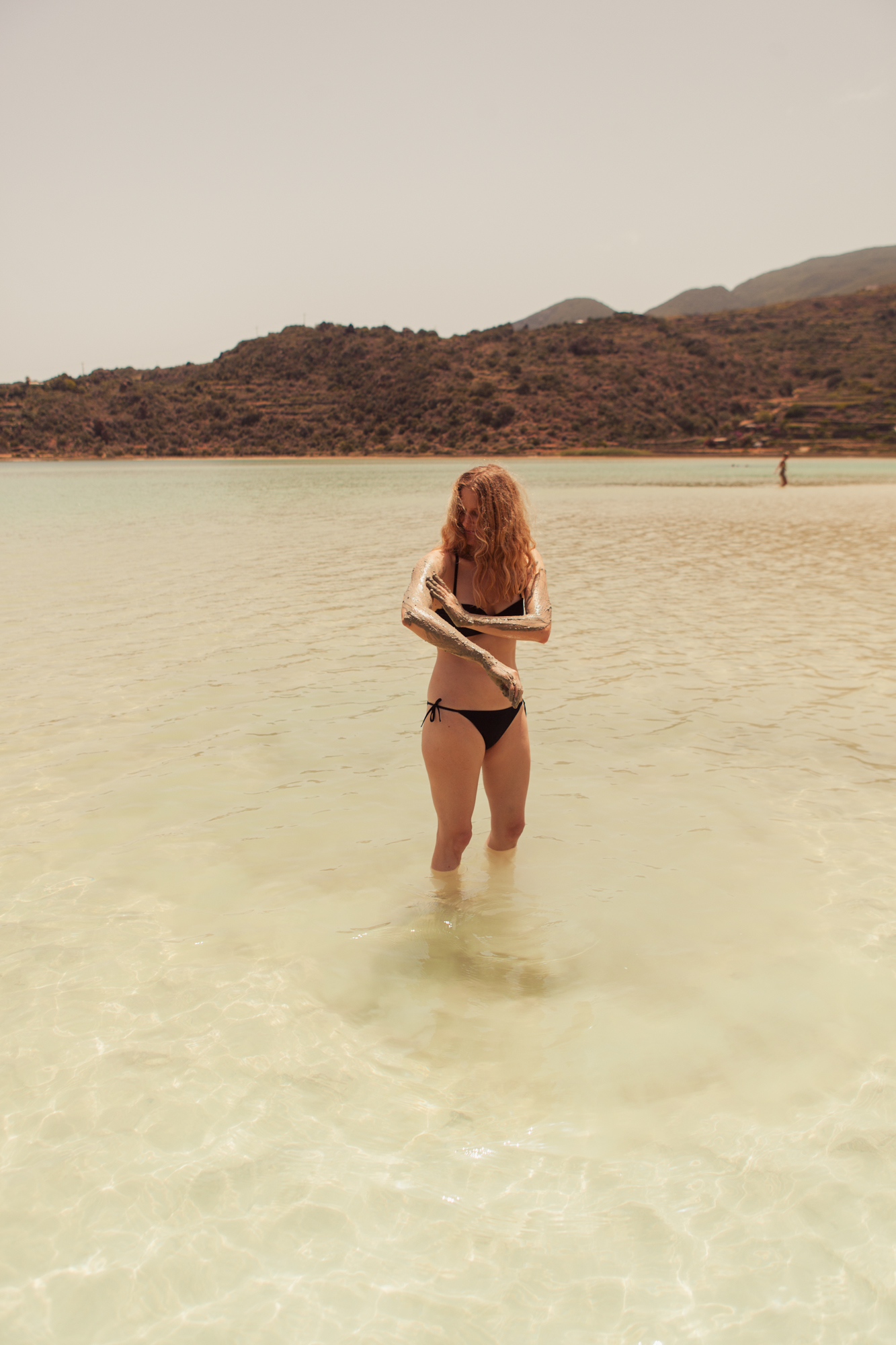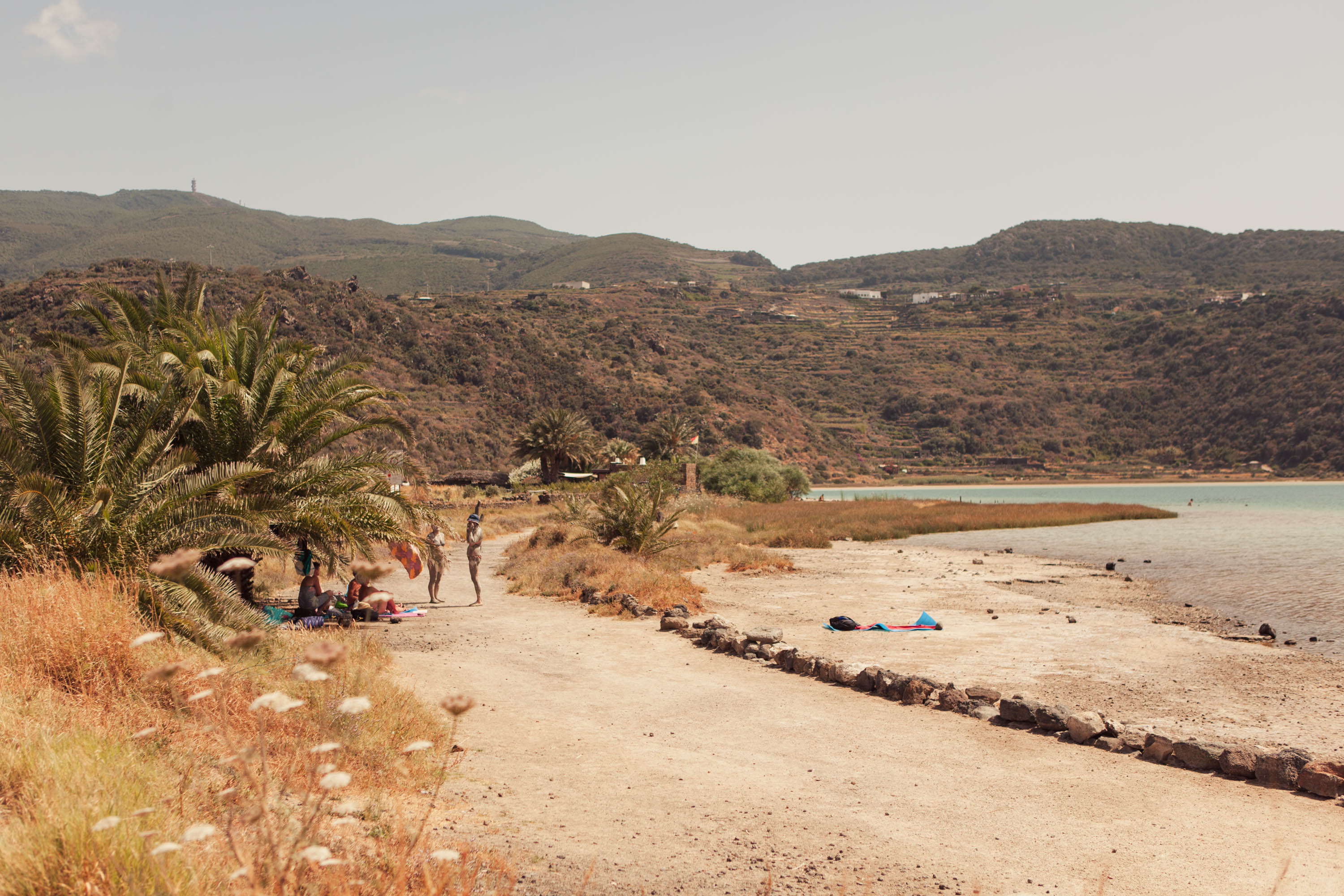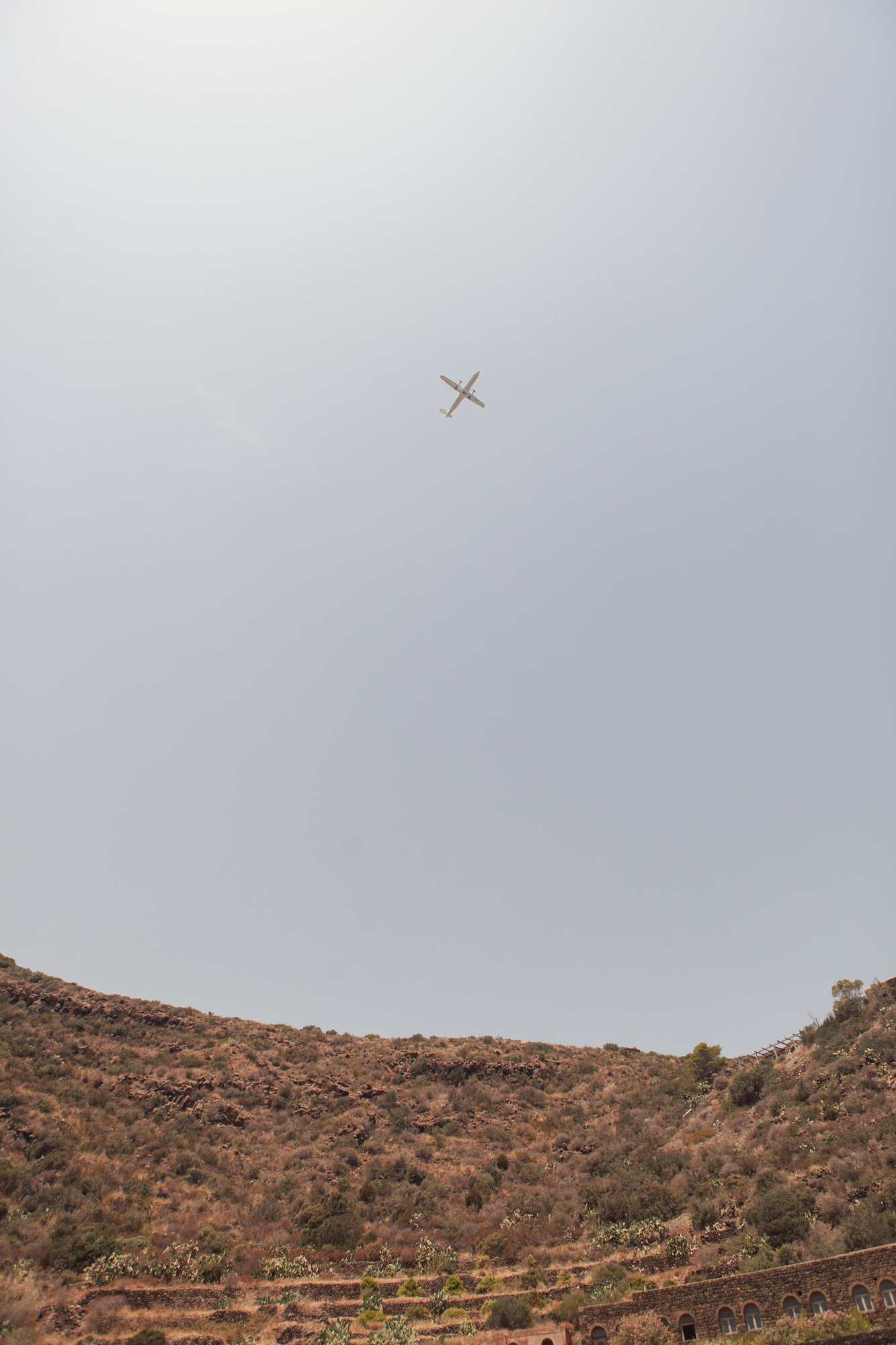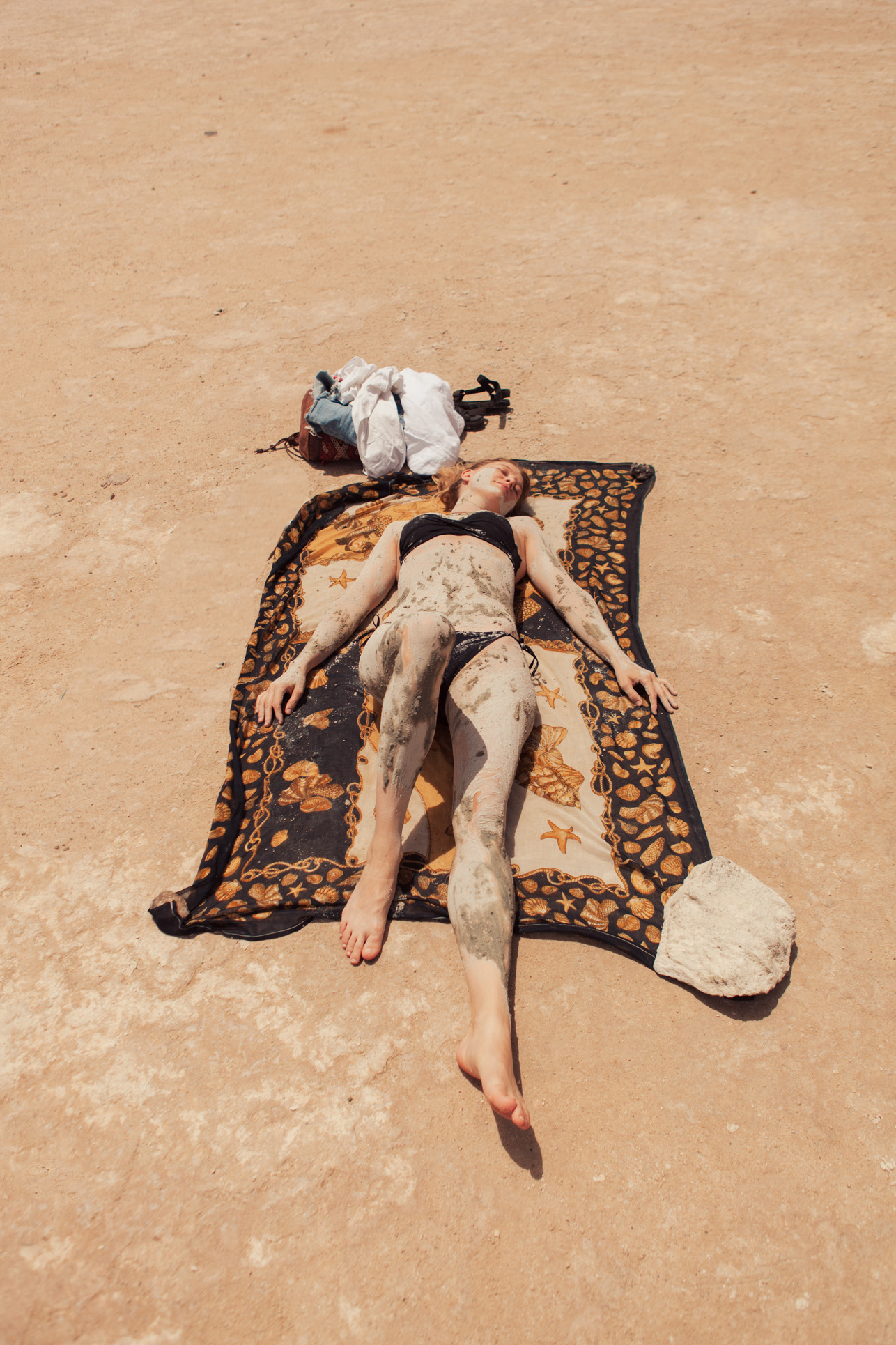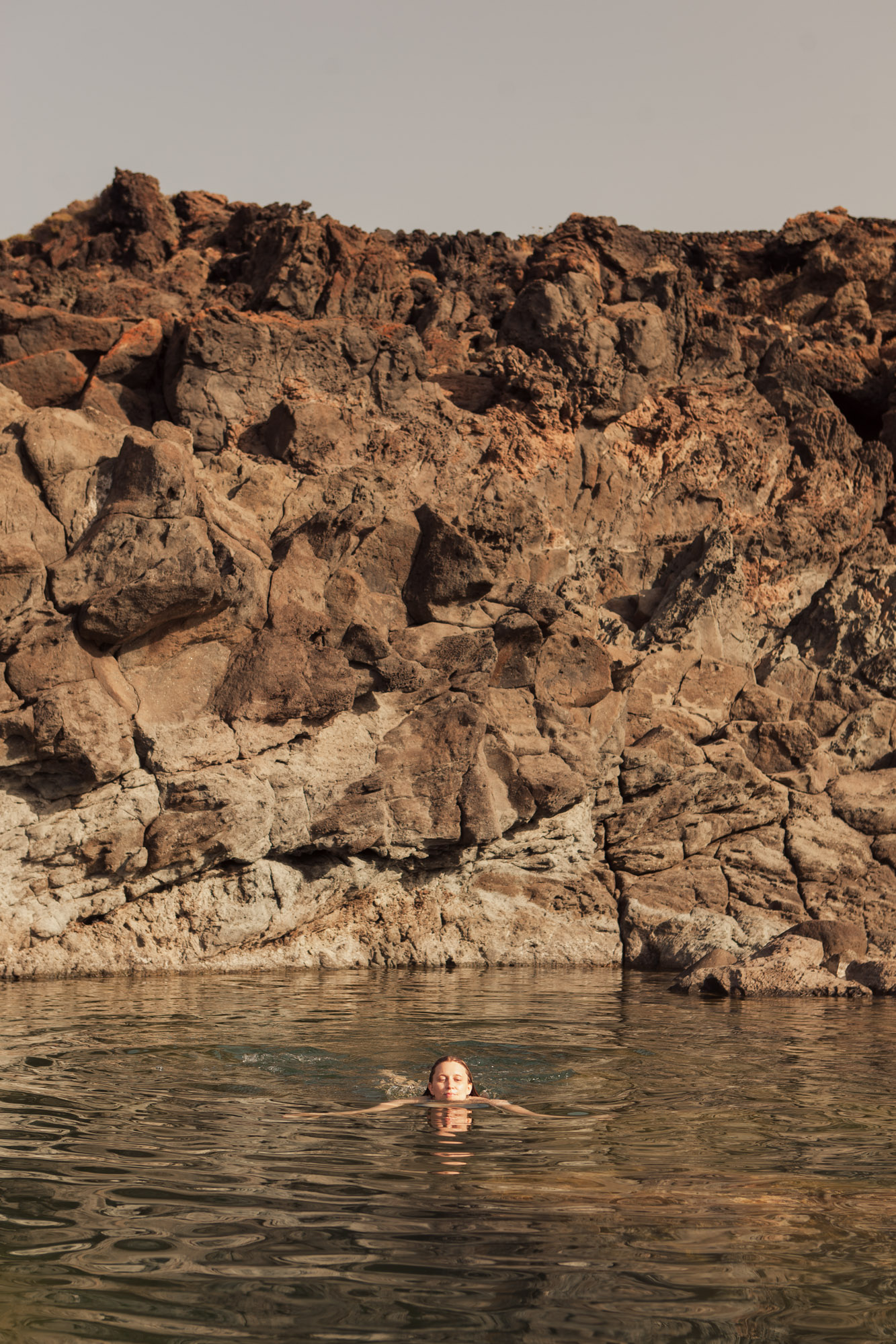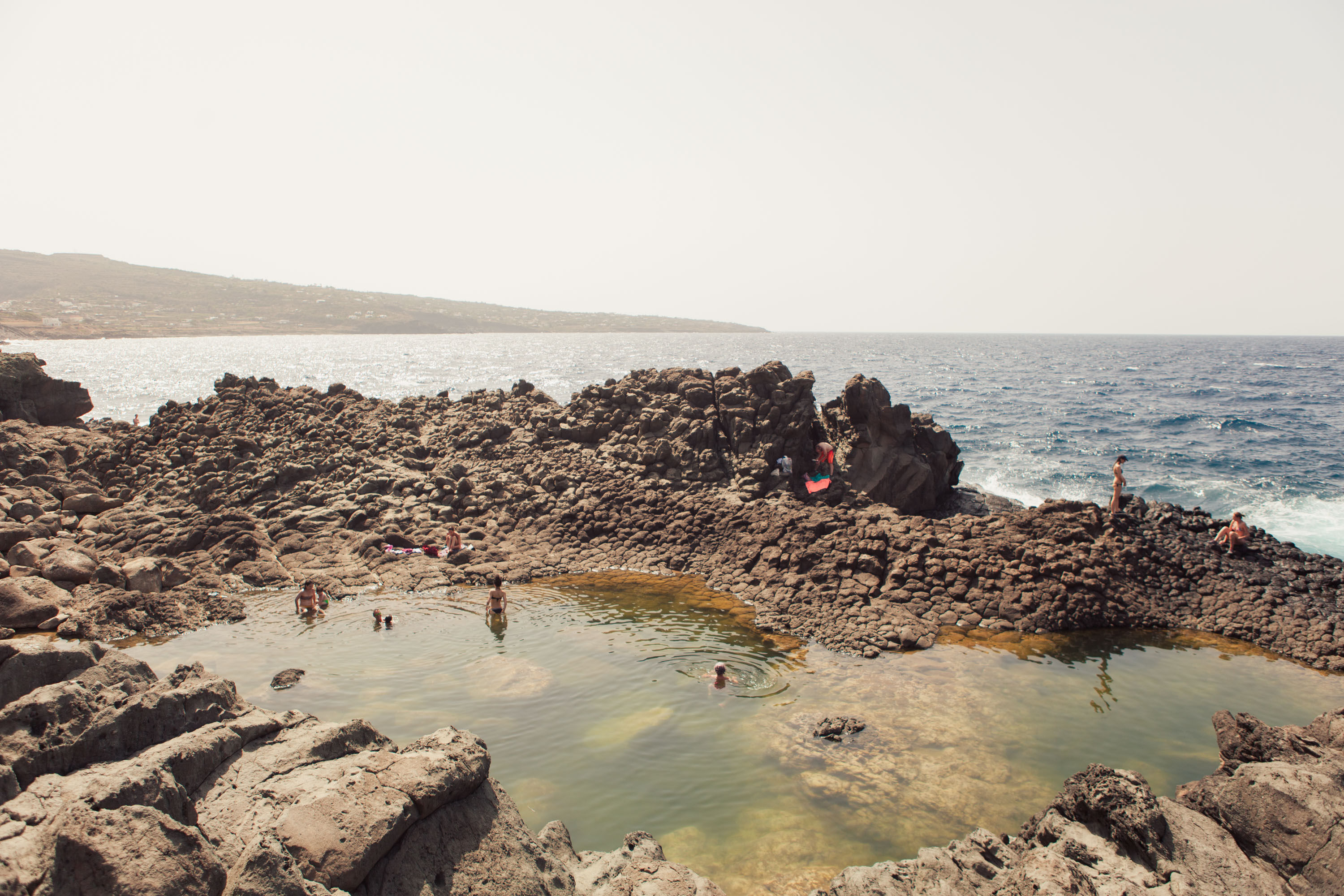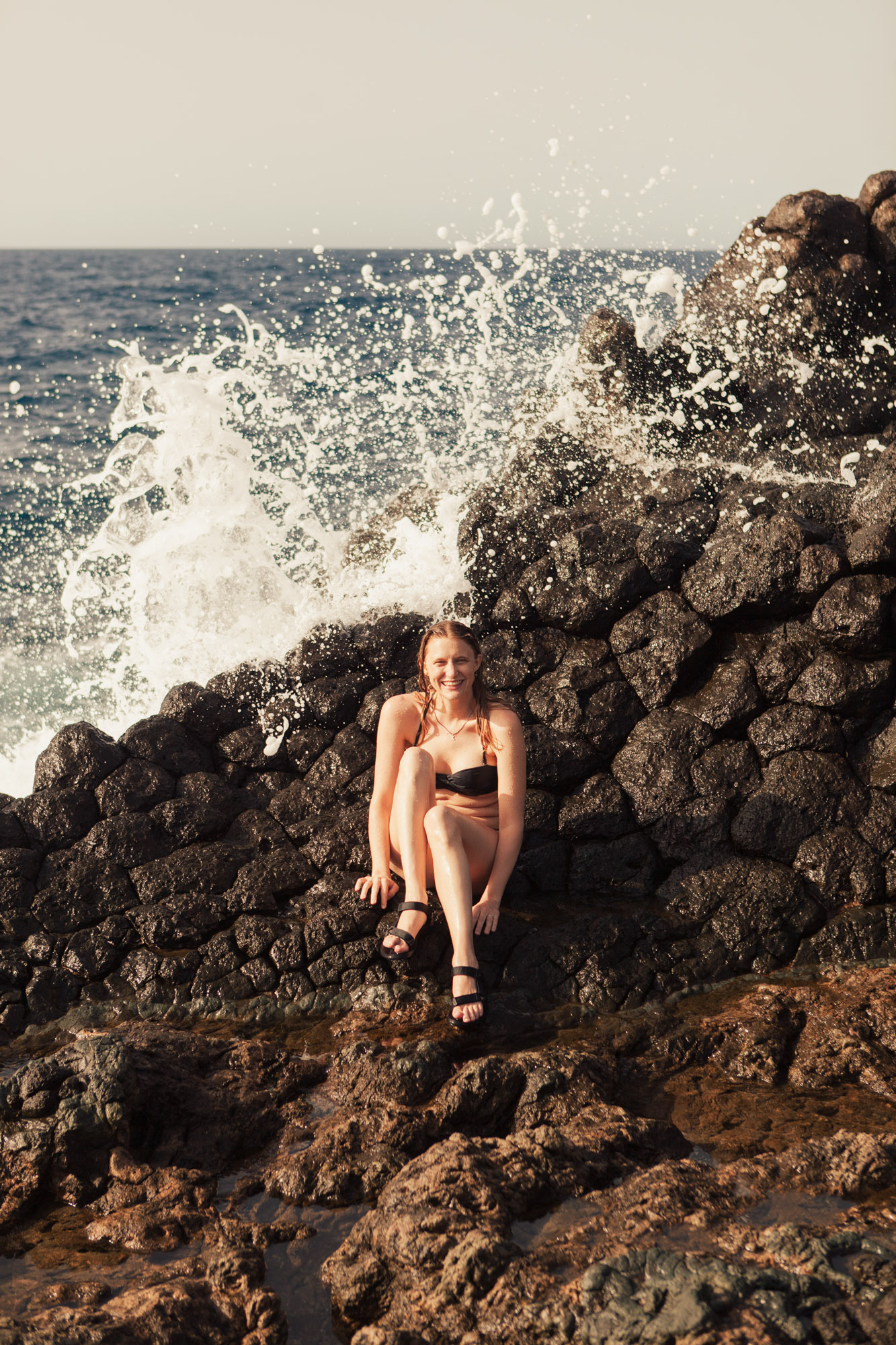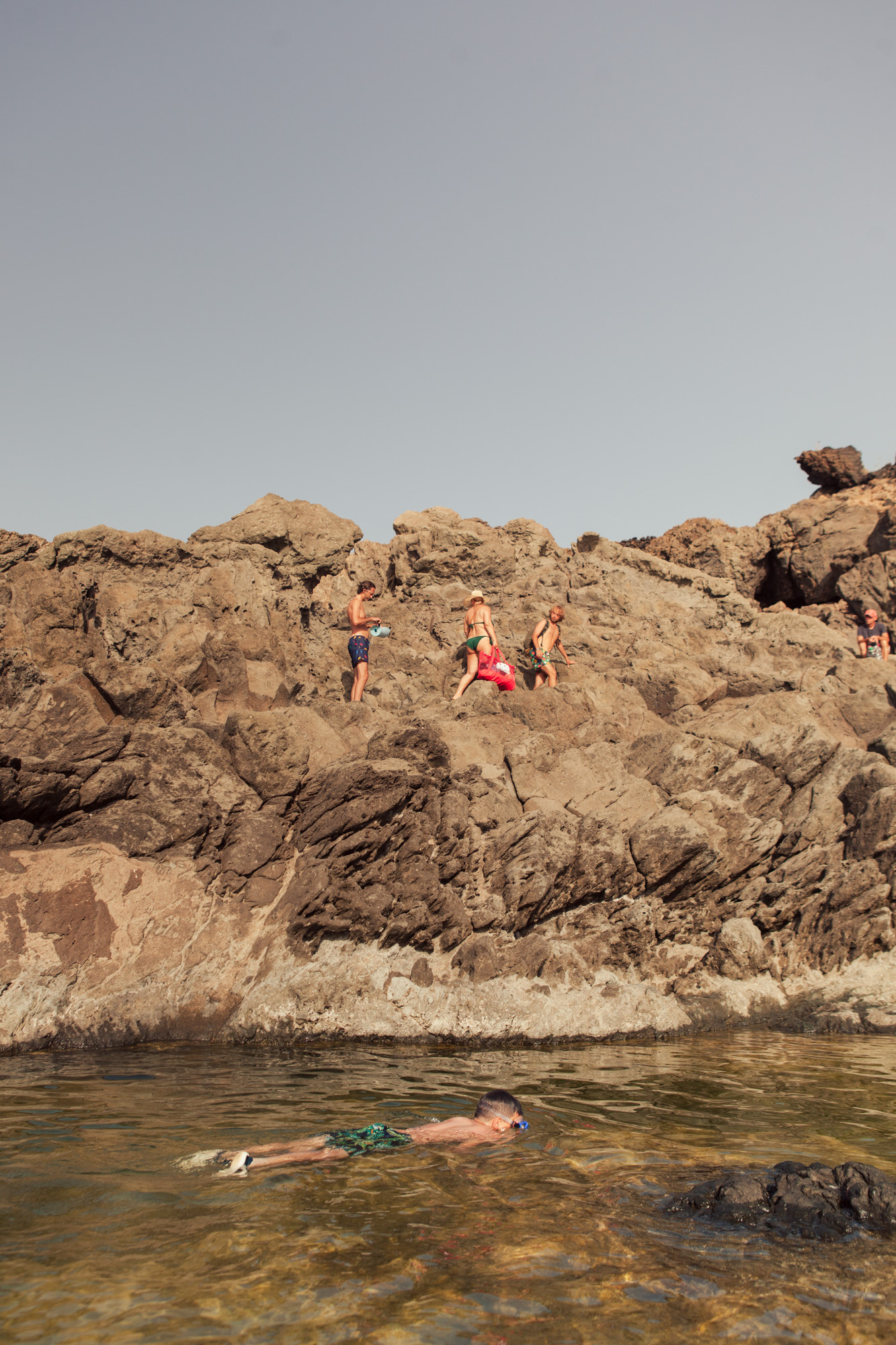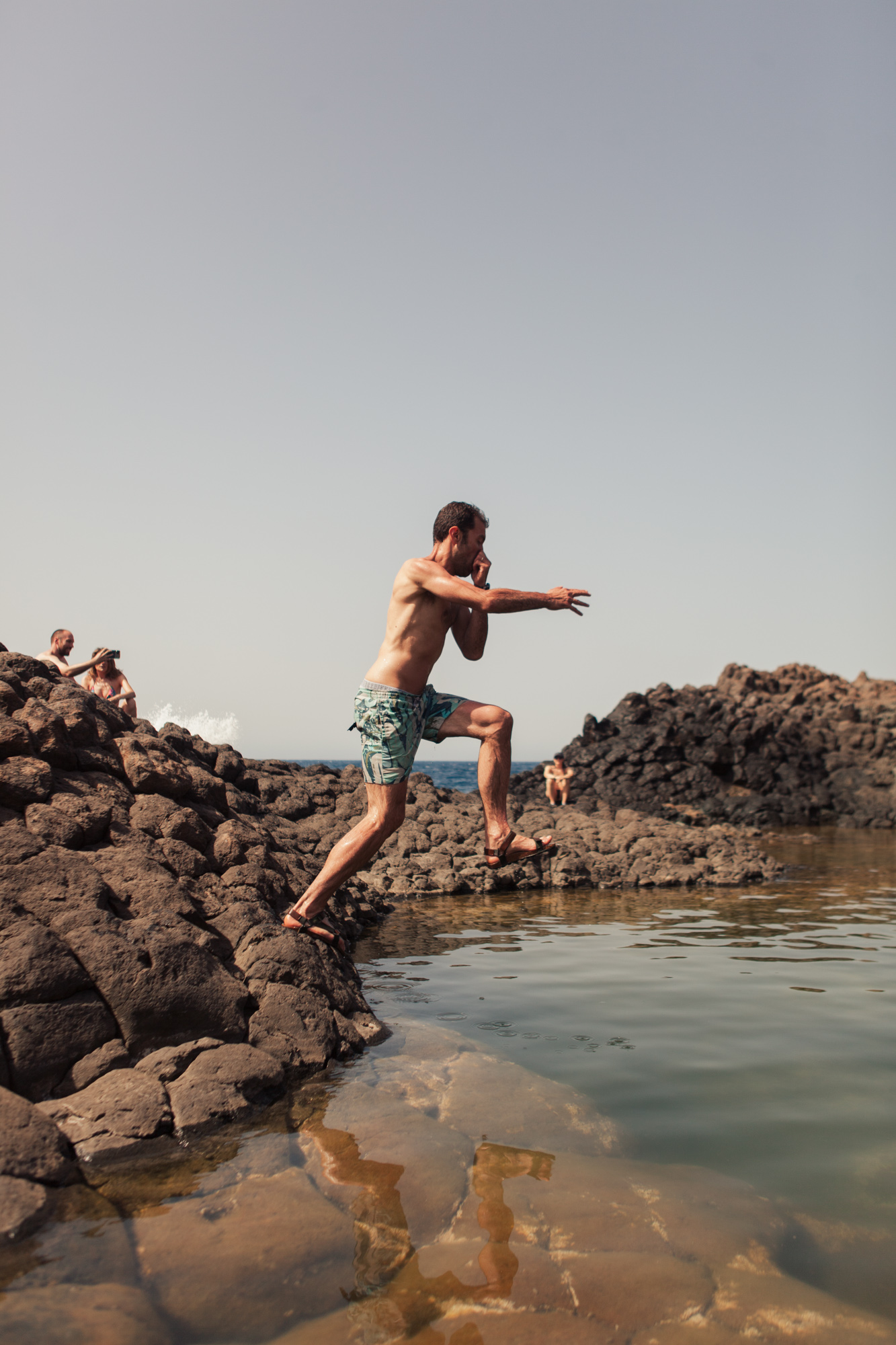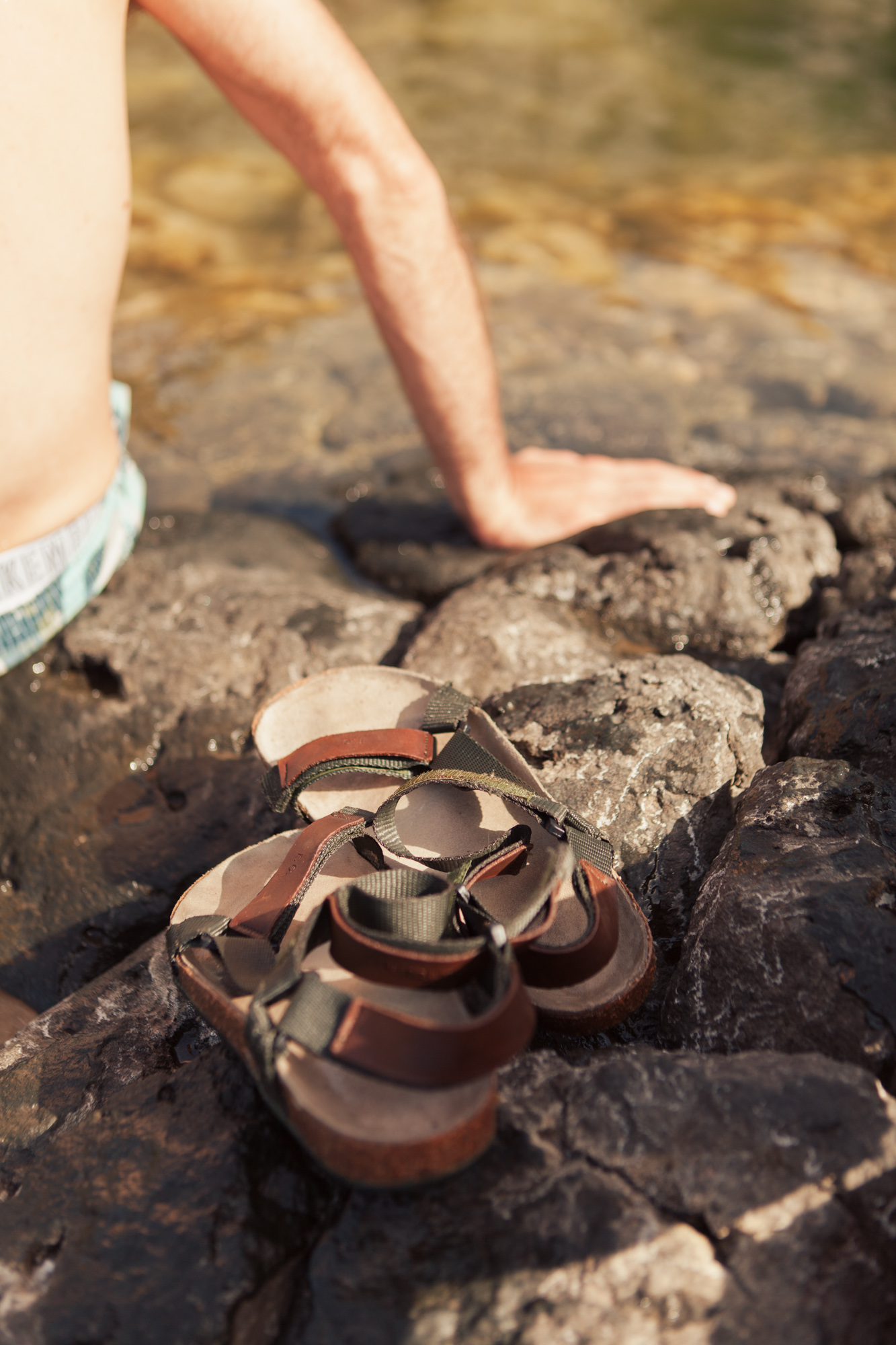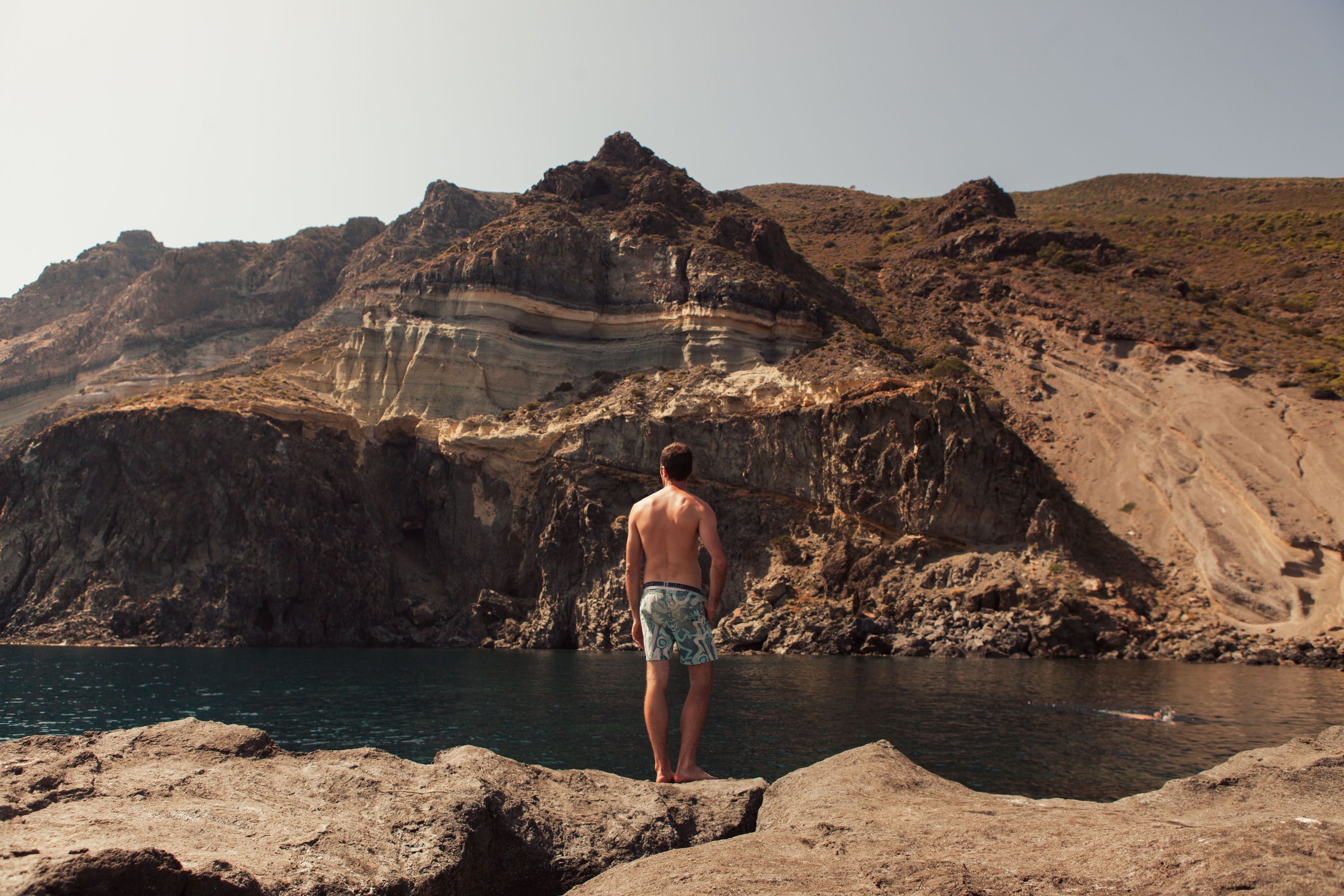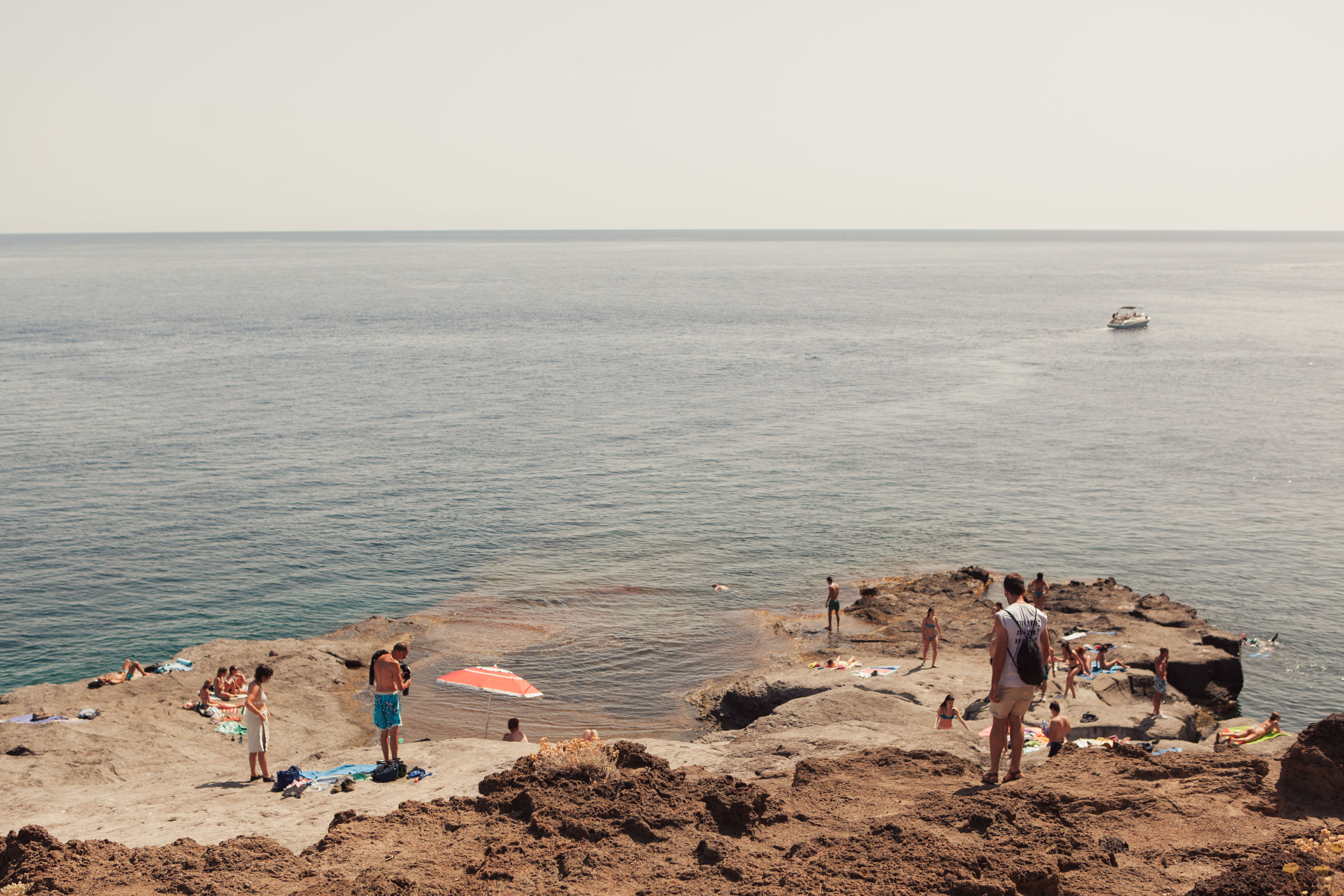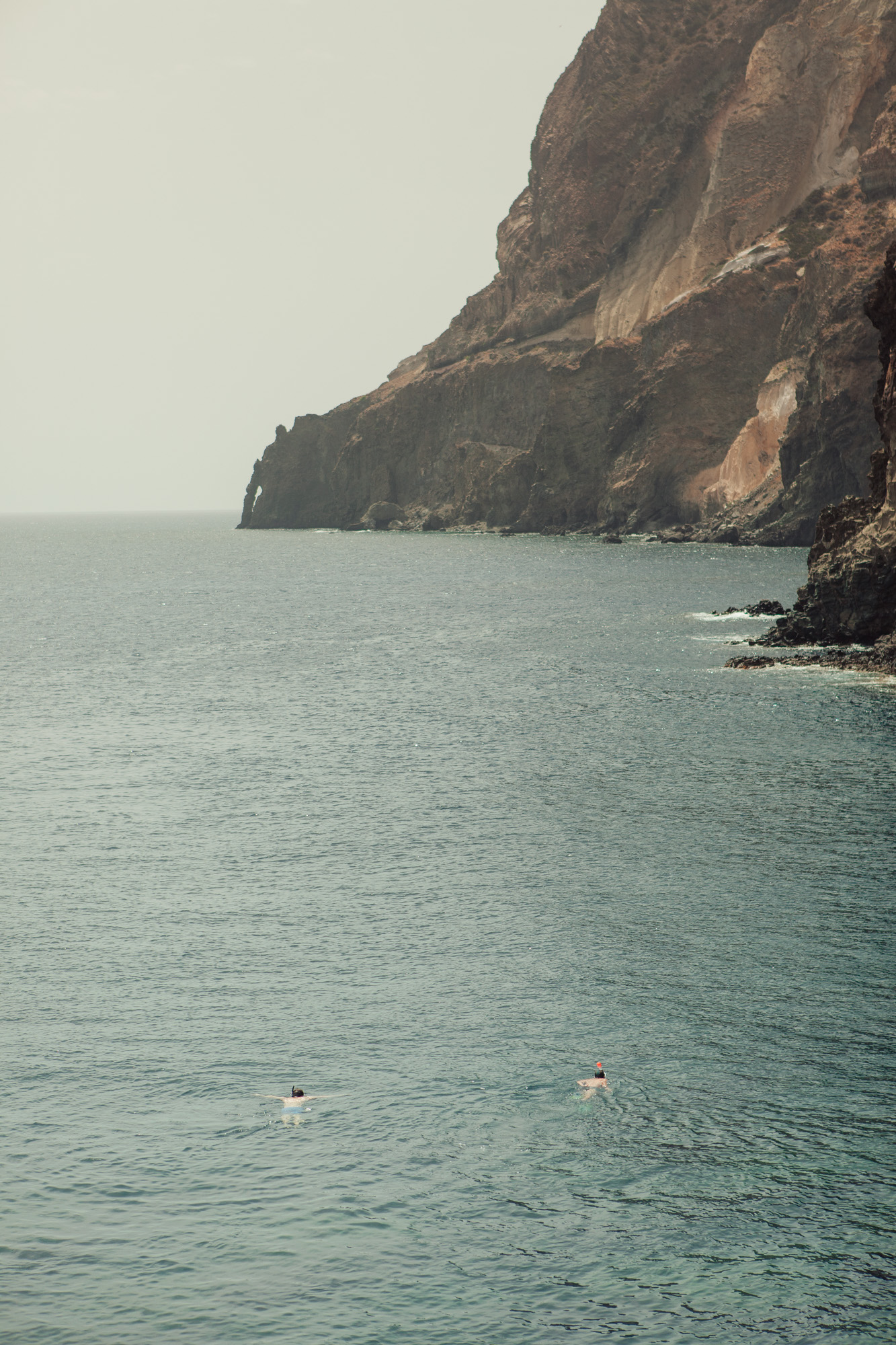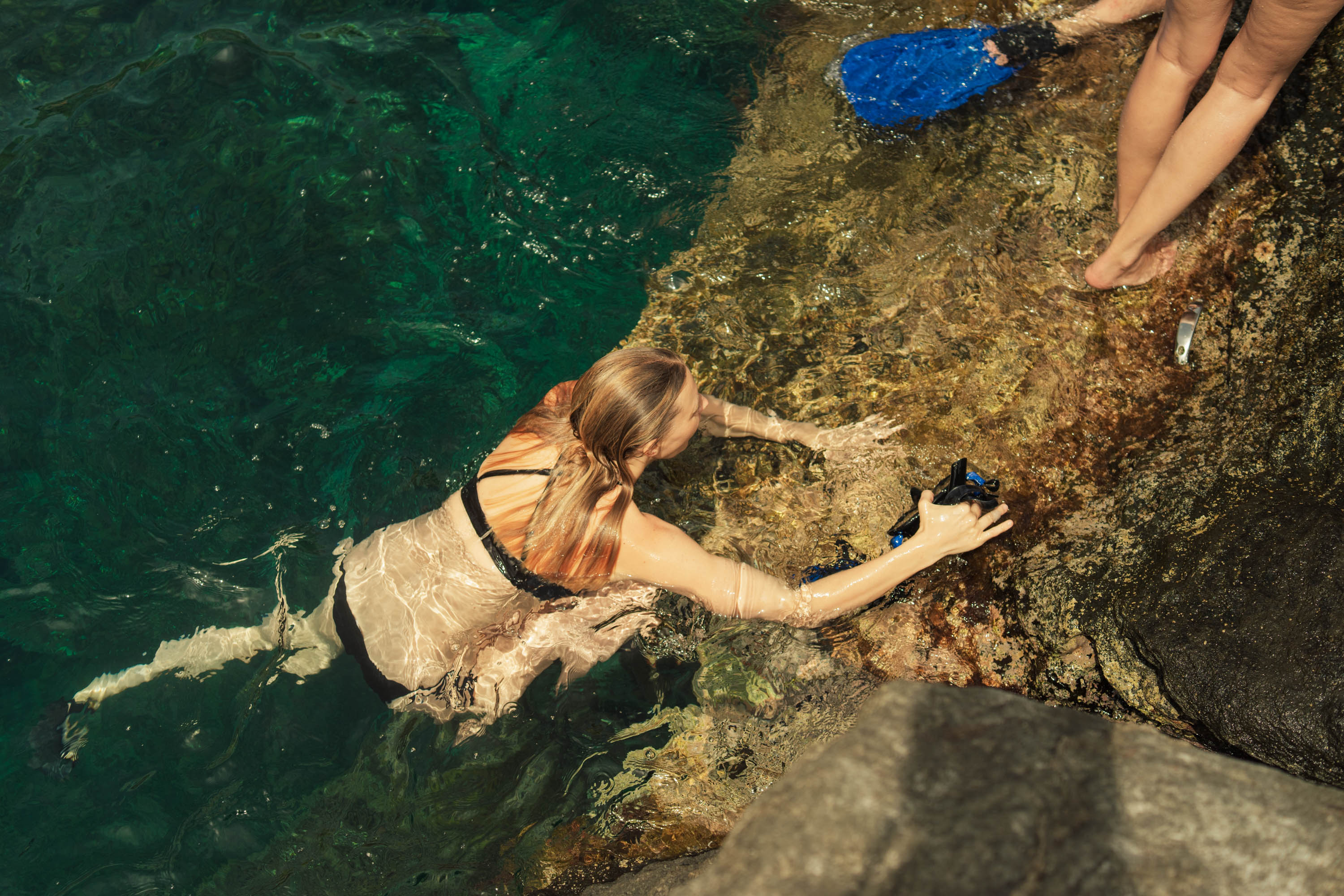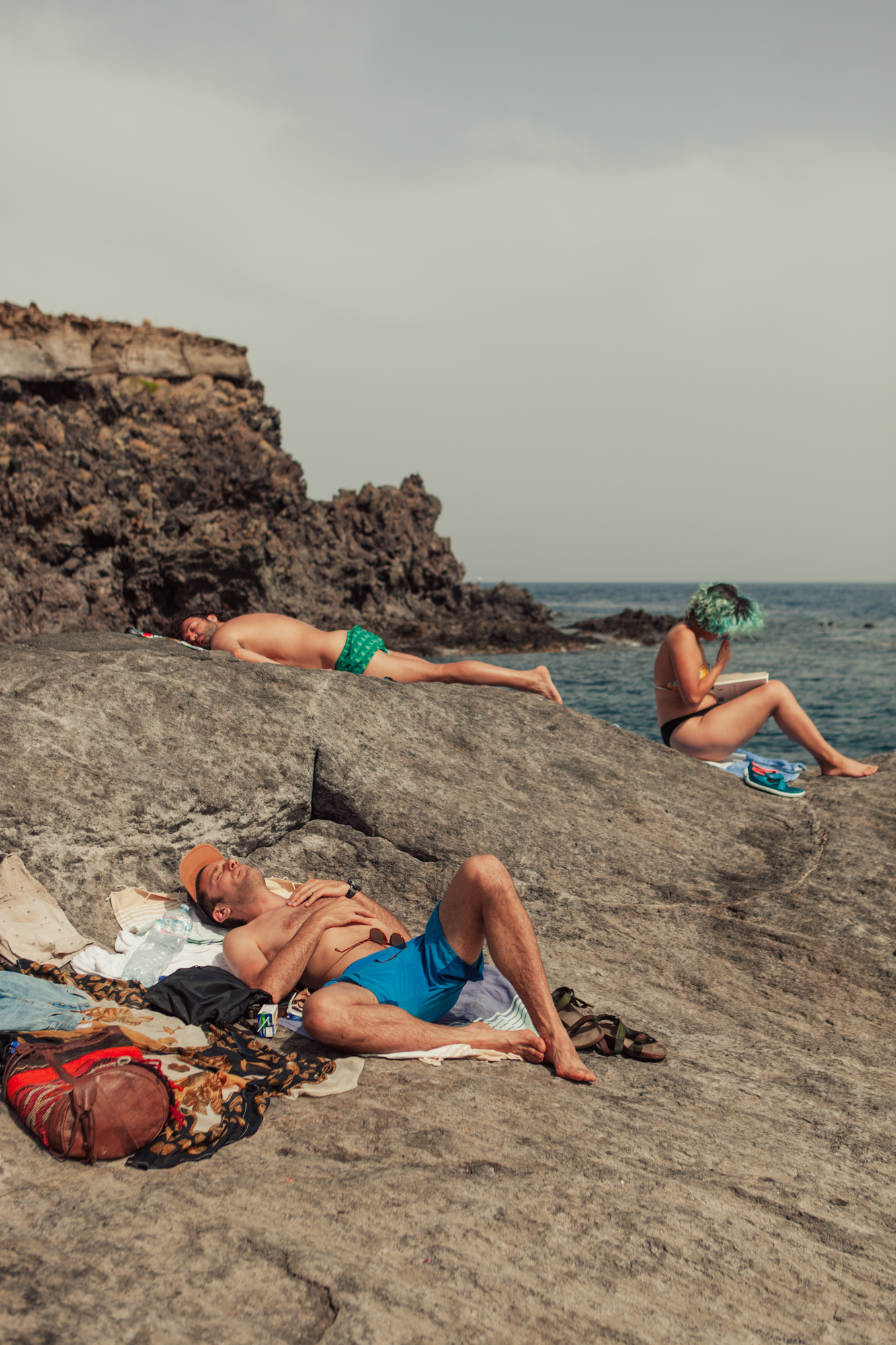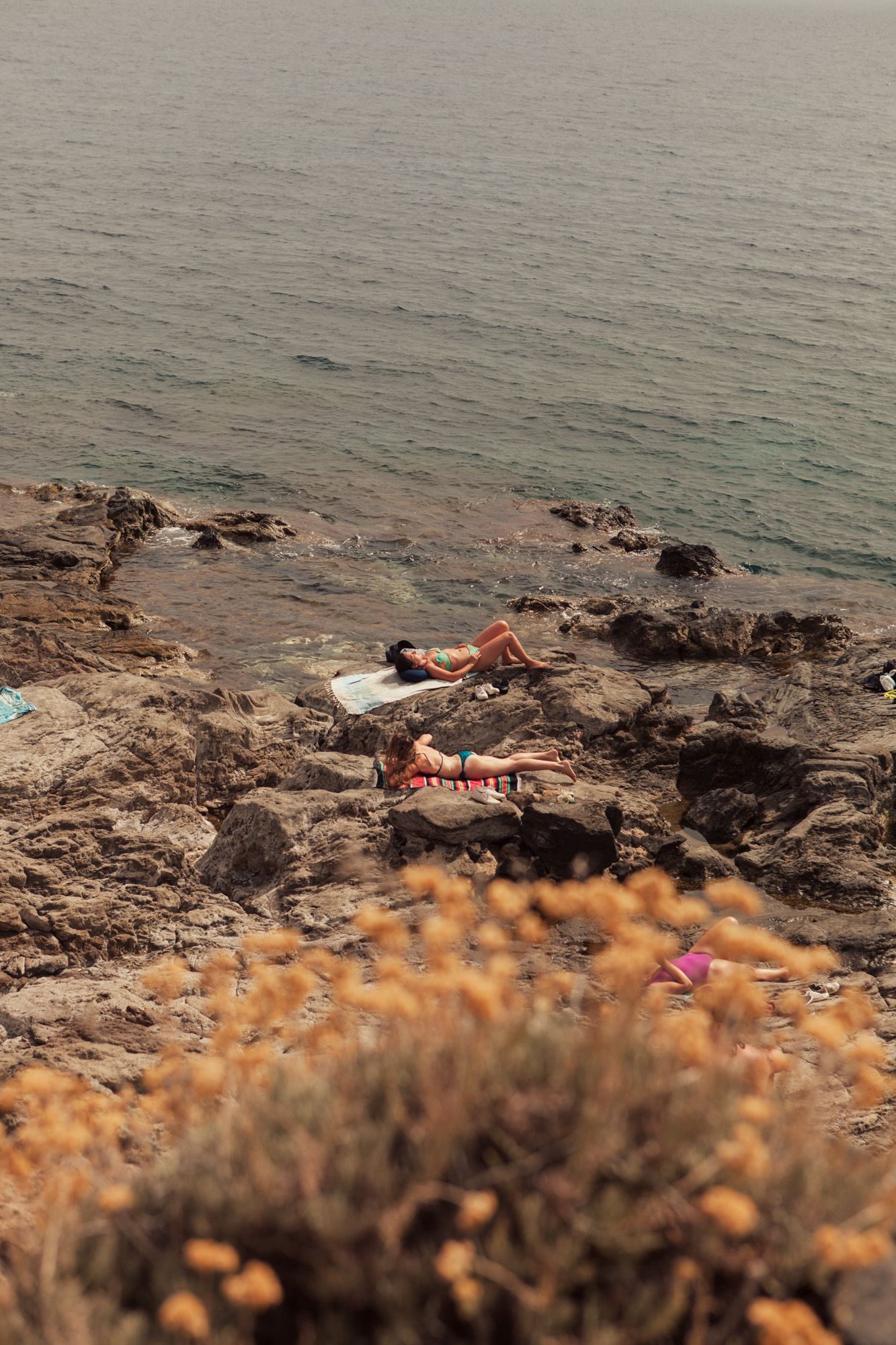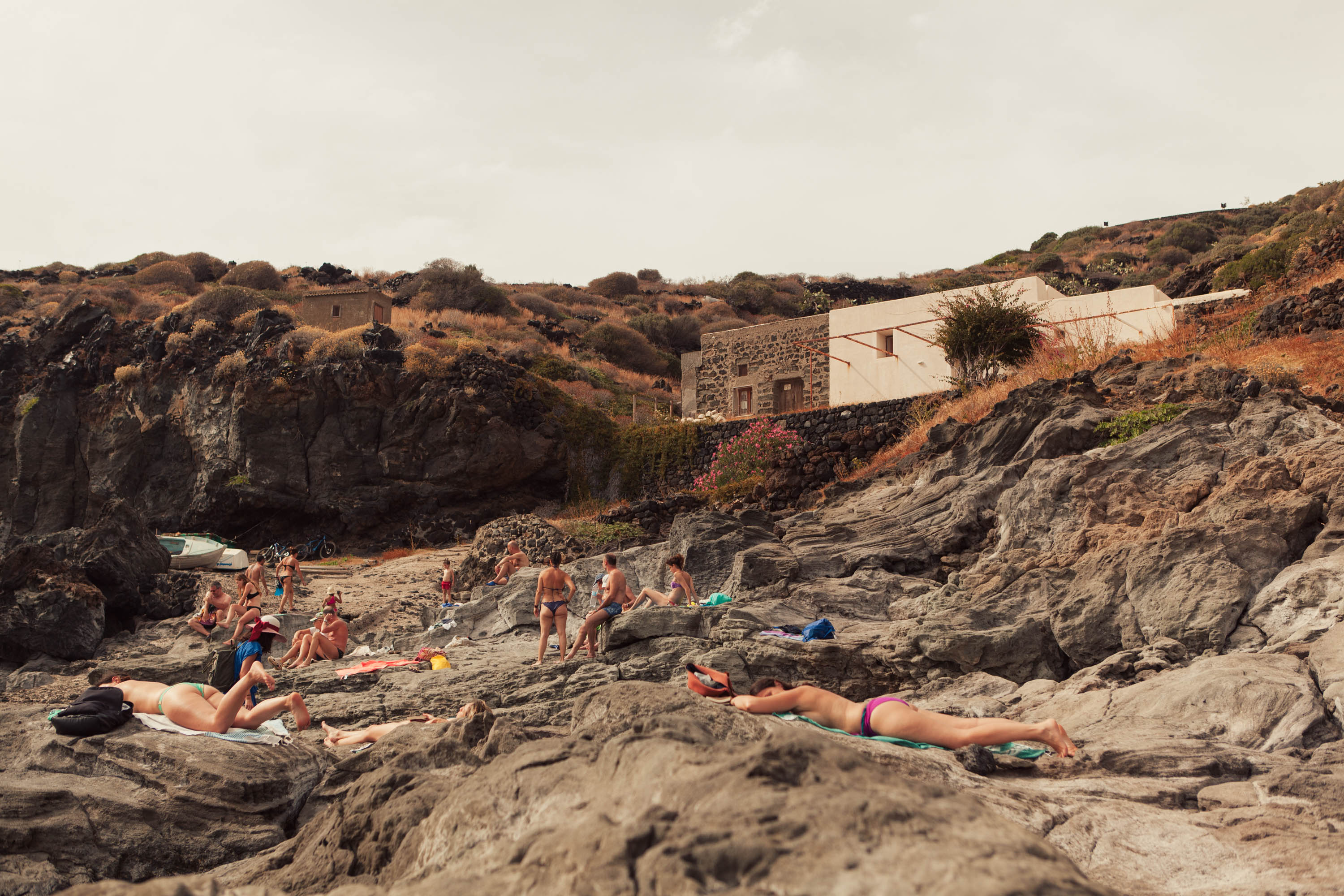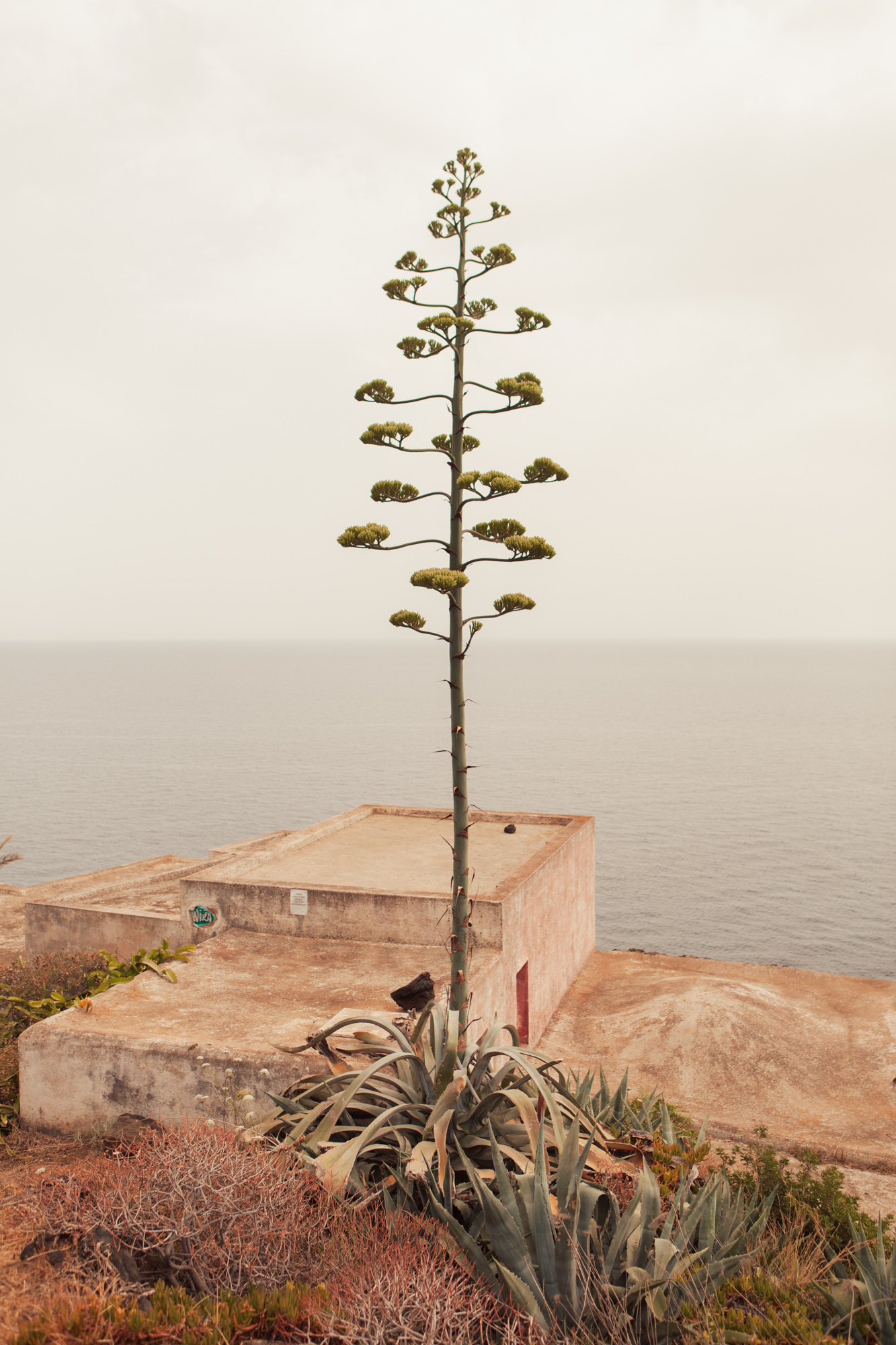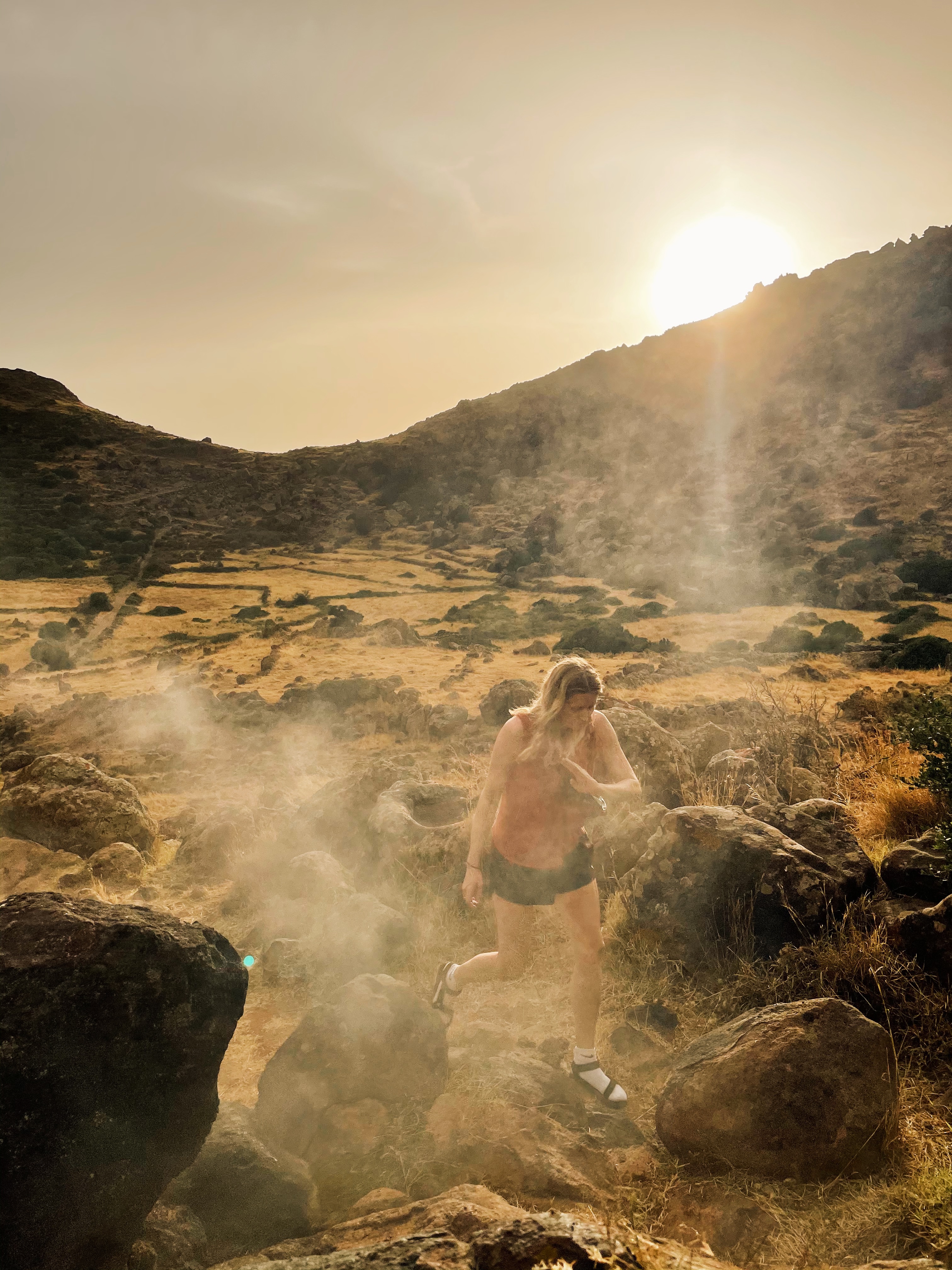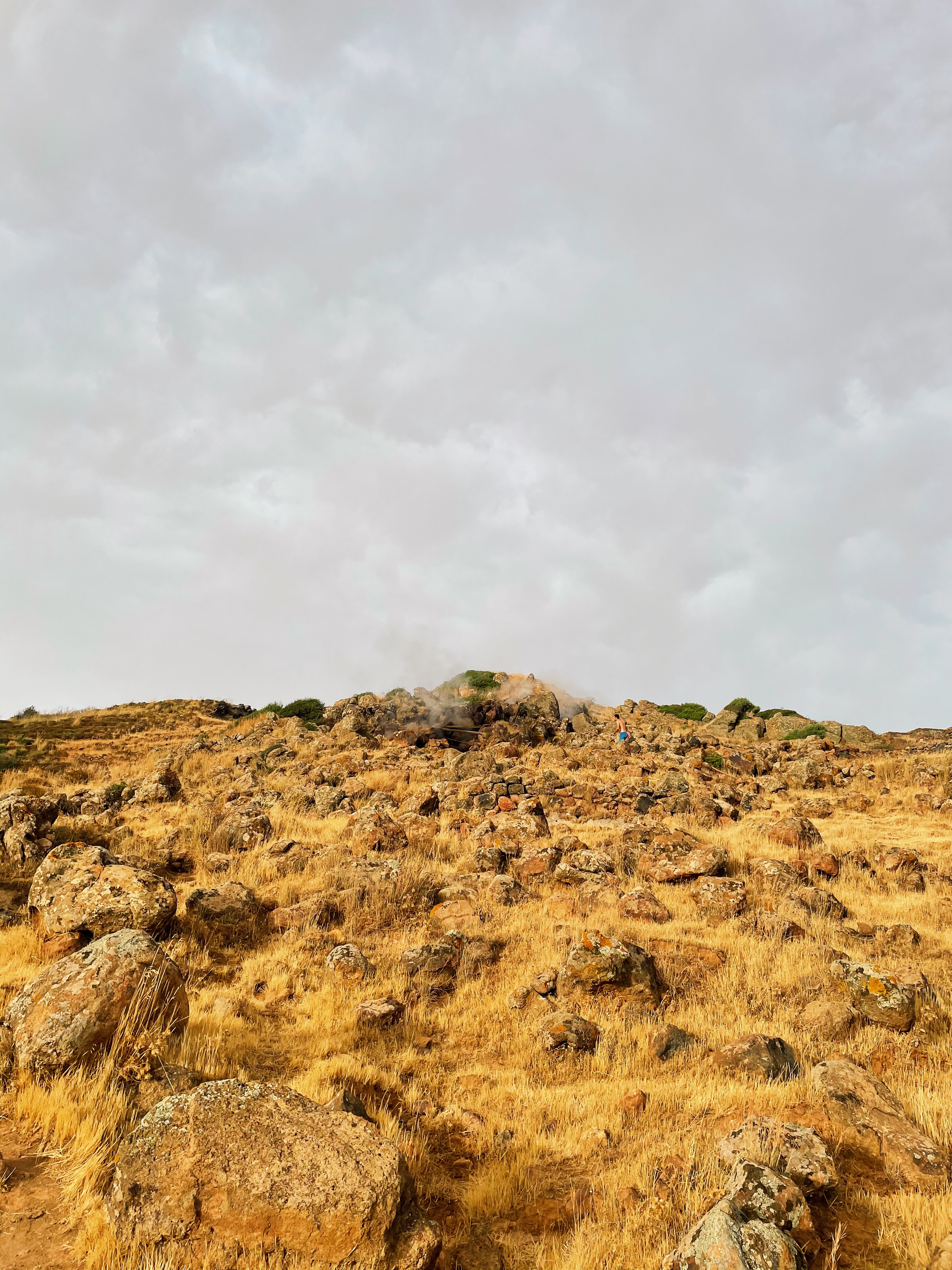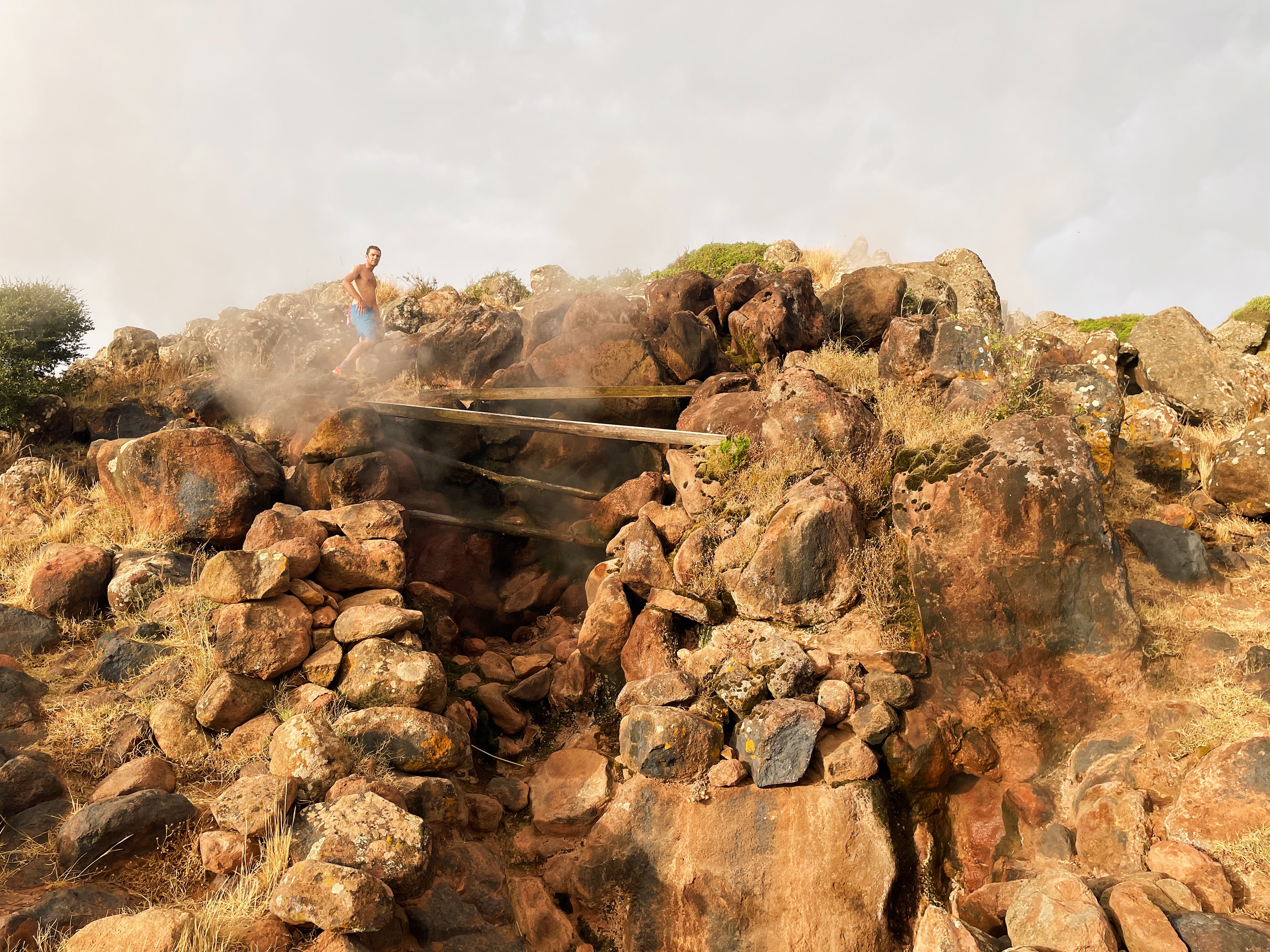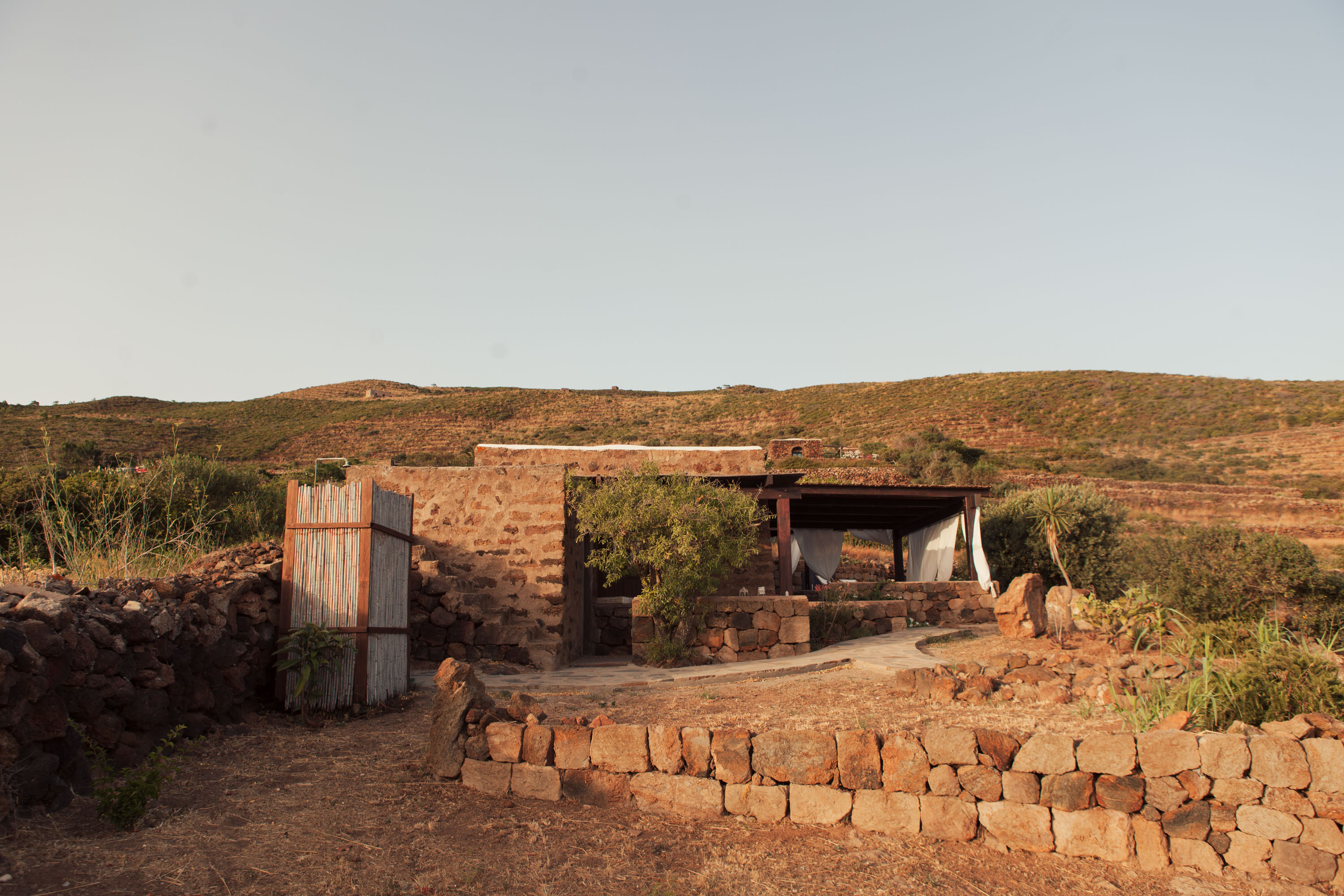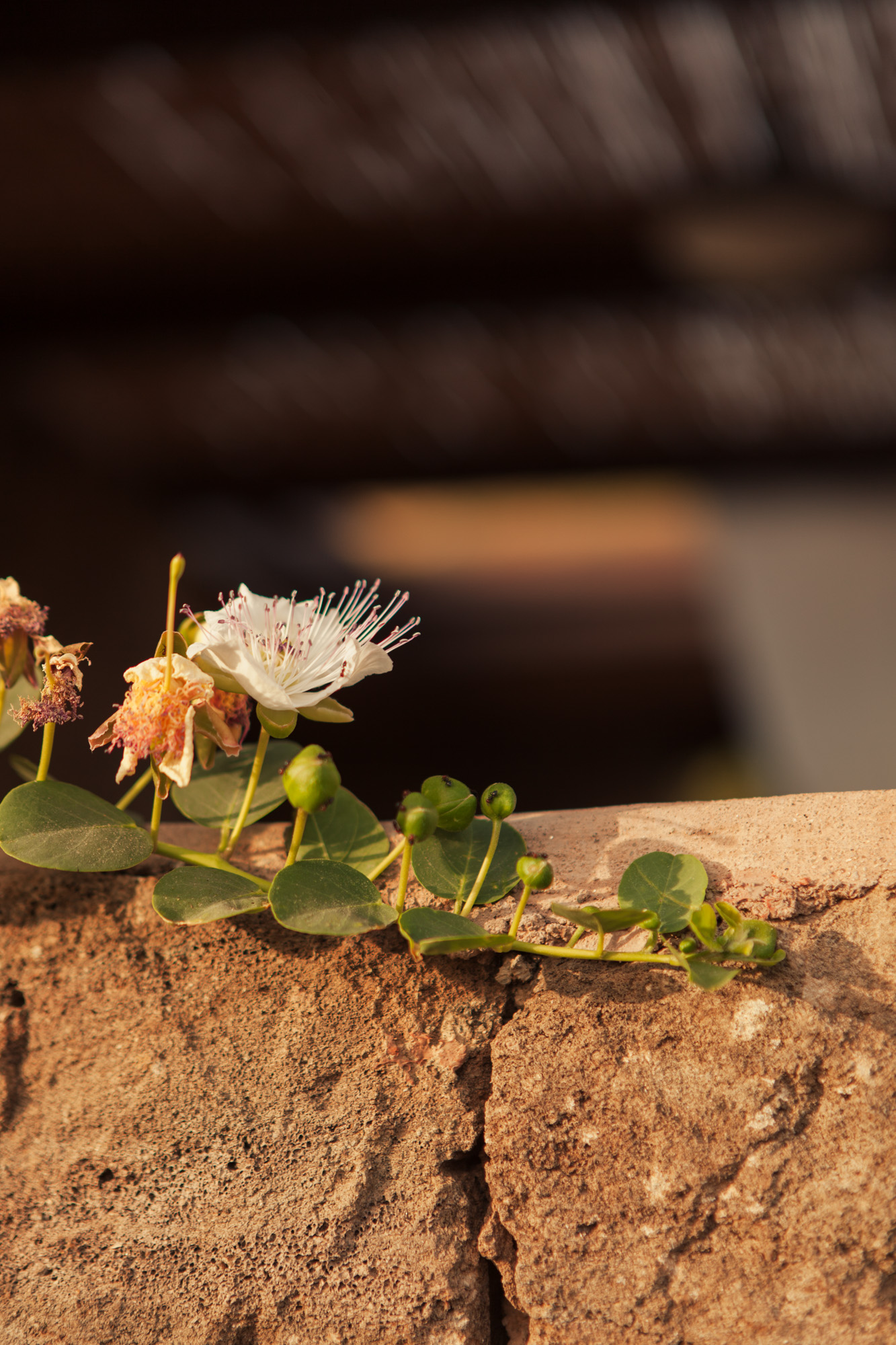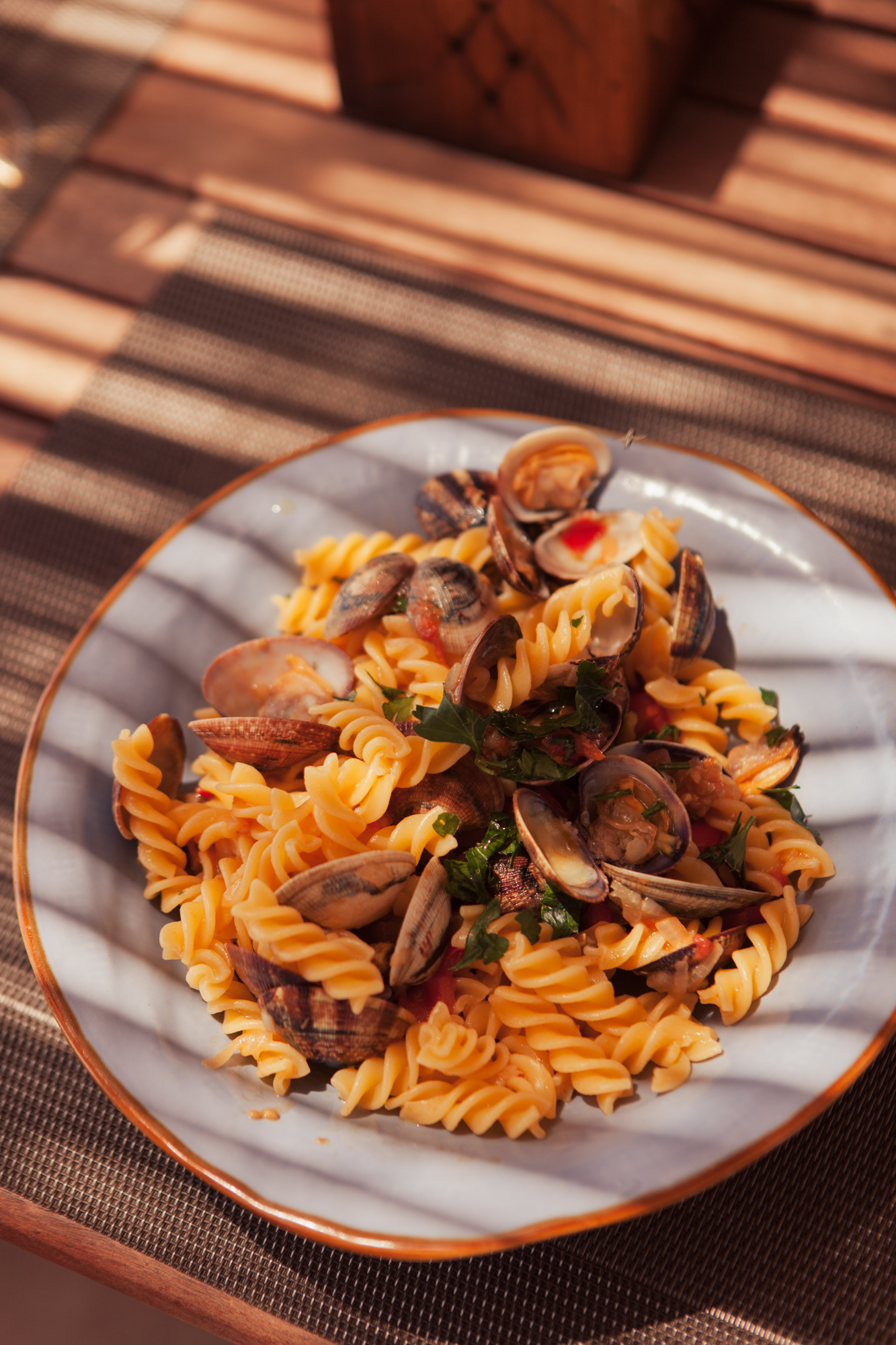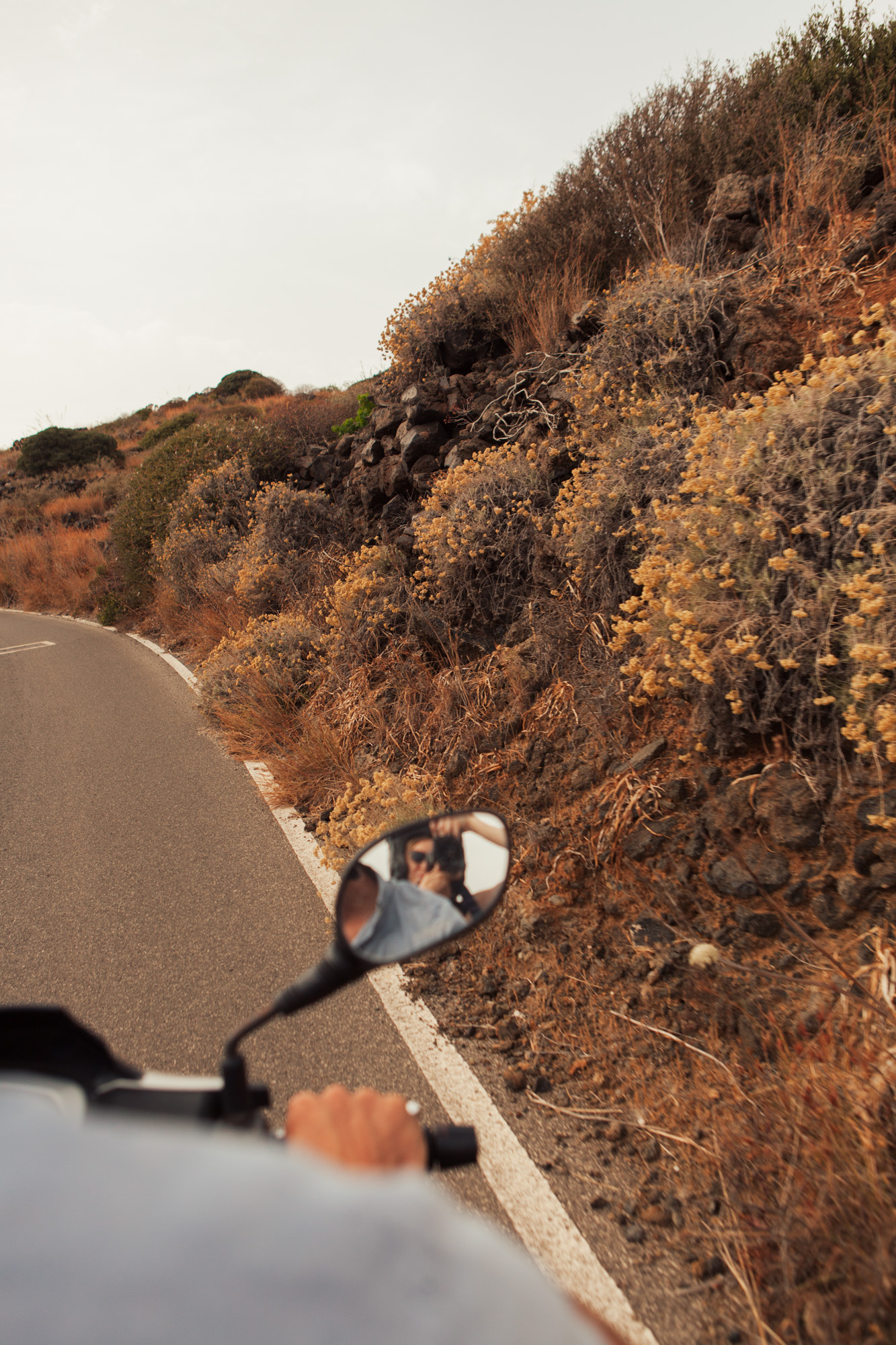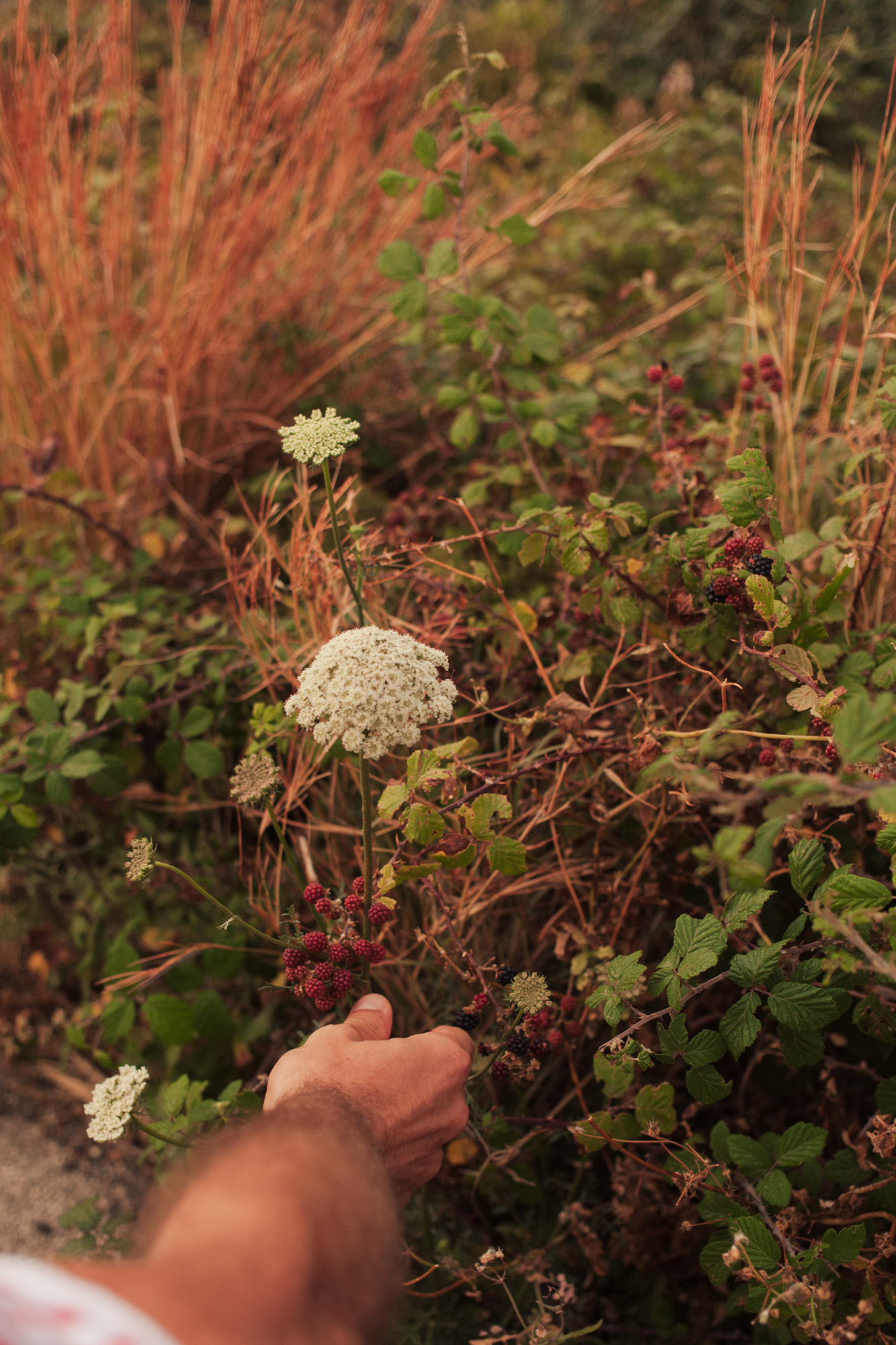![]()
Photos and words by Katie McKnoulty
Pantelleria is paradise for those in search of somewhere down-to-earth and soulful. It’s an intense immersion in nature, from the volcanic rocks and springs, to the clean blue waters, dammusi houses made from the earth and open-air scooters and buggies.
I peer out of the plane window from the tiny airstrip that is Pantelleria Airport and admire the alien landscape. It's been one and a half years since I've seen the inside of an aeroplane or touched down somewhere new. I can’t tell if my awe is real or just the result of not seeing anything so foreign to my eyes in so long.
We’re in Pantelleria, a tiny Southern Italian island 30 minutes by scooter from top to bottom and from one side to the other. When I’m deciding where to go on a June summer holiday, constrained to Italy thanks to visa and pandemic concerns, I choose the most un-Italian, exotic, faraway place I know within the country. I choose Pantelleria, the island I’ve been dreaming of since it backdropped Guadanino’s
A Bigger Splash in 2015, a film I watched longingly from a cinema on the other side of the world in Australia.
![]() Without sandy beaches, visitors and locals ‘make do’, laying down towels and swimming from the rocks.
Without sandy beaches, visitors and locals ‘make do’, laying down towels and swimming from the rocks.The other-worldly feeling that struck me upon landing continues for several days more as the clouds hang low and thick, enveloping the whole island in its own atmosphere. I feel cut off from the rest of the world, in that good way you want on holidays.
The feeling is intensified by the fact that several days before our arrival, a fishing boat unwittingly drops its anchor onto an underwater phone line, suspending all mobile connections until further notice. We have no signal for the entirety of our stay. While this would be downright unacceptable in most places, it’s merely something to be taken in stride on a slow-paced island like Pantelleria.
We’re still in Italy here, but the volcanic rock that is Pantelleria floats closer to Tunisia's East coast than it does to mainland Sicily. And so North African influences abound on the island, particularly in the architecture and the arid landscape; it really doesn’t feel like we’re in Italy anymore.
![]() Pantelleria’s dammusi, unique structures native to the island made from local volcanic stone, fashioned into a dome shape to keep the air naturally cool inside.
Left: Map of the island. Right: A dune buggy, Pantelleria’s most luxurious local mode of transport.
Pantelleria’s dammusi, unique structures native to the island made from local volcanic stone, fashioned into a dome shape to keep the air naturally cool inside.
Left: Map of the island. Right: A dune buggy, Pantelleria’s most luxurious local mode of transport.
Riding on the back of our scooter from the airport to our Airbnb, I see the extraterrestrial landscape up-close for the first time: black volcanic rocks sprout sun-bleached wildflowers from their crevices, dried brown and yellow bushes cover the earth and even the most verdant plants are faded to a washed-out green.
Being on Pantelleria is an immersion in nature you can’t really escape. As a volcanic island, hot springs dot the ocean floor and steam seeps from cracks in the earth in places making natural saunas and fumaroles in the island’s rocky centre.
Strong winds batter Pantelleria regularly, so much so that planes often have a hard time landing and taking off. Grape vines are grown low to the ground to keep out of the path of the forceful gales.
On our holiday in late June though, the heat and strength of the sun is what gets to us, bouncing back from every surface, our only respite the cool, clear water surrounding the island.
![]() Local grape vines grow different here, low to the ground to avoid the strong winds.
Local grape vines grow different here, low to the ground to avoid the strong winds.
![]()
![]()
The Island Without a Single Beach
![]()
Baiata dei Turchi
Italians had warned me about Pantelleria. “Brutta!”, a friend said, Italian for ugly. And most importantly, they told me there wasn’t a single beach, with the local definition of a beach being a wide, flat expanse of sandy or pebbly shore, usually overrun by plastic sun beds and bright umbrellas.
But Italy’s ever-present bagni, or beach clubs, always seemed a bit weird to me anyway. I was used to seeking out wilder beaches and swimming spots. So I knew Pantelleria’s mixed bag of different swimming spots would be beach enough for me.
As small planes pass over the turquoise jewel that is the Lago di Venere, Lake of Venus, I can’t help but think of my former stressed-out self up there several days ago, about to land at the nearby airport. It seemed I’d become a new person in the space of a few days, now covered in mud, baking, melting into my surroundings, near-naked on the cracked earth.
![]()
Often called the Specchio di Venere, translated, Mirror of Venus, this is the island’s free and natural, open-air spa. The thermal spring lake is formed in the crater of an extinct volcano, its bed covered in thermal mud that’s healing for the skin.
The waters are warm but not hot, sulfurous but not smelly. Here you spread the mud on your skin and let it dry lying under the hot sun. You immerse yourself again in the lake’s waters and emerge cleansed.
![]()
![]()
![]()
When I was a girl growing up in Australia, we’d spend hours exploring the intricate natural rock pools at the end of every beach. But I’d never seen rock pools like these before that make up the Laghetto delle Ondine, translated, Little Lake of the Little Waves.
Instead of tiny rock pools you can barely poke a finger into, these ones are the size of backyard swimming pools. They’re filled with fresh seawater trickling, sometimes crashing, in from the sea just over the wall from where you swim.
![]()
![]()
![]() Left & Right: Le Frattesi sandals helped us navigate the pools in and out of the water.
Balata dei Turchi
Left & Right: Le Frattesi sandals helped us navigate the pools in and out of the water.
Balata dei Turchi
![]()
We emerge over the hill after a rocky scooter ride down from the main road to see a dreamy Italian summer scene: 20 or so people sprawled out over the rocks, some reading or dozing lazily, others snorkelling around the water’s edge, an umbrella jammed into a rock’s crevice.
![]()
Backdropped by a dramatic mountainscape lined with dark green and blue strokes, the Baiata dei Turchi becomes our preferred swimming spot. Located on the Southern tip of the island, it’s probably the most out of the way place to swim, but the most worth it too.
Without a man-made structure in site, plunge into the clear, deep water with snorkel on, explore the underwater world (I saw two starfish!), alternating between baking on the black volcanic rocks and diving in to cool off again.
![]()
A similar vibe to the Balata dei Turchi but a little further North and closer to Scauri town, people sprawl out on the rocks after the 10-minute steep walk down from the carpark near the main road.
Venture down a different road (take a left at the first dammuso house after the parking lot) and find underwater thermal springs bubbling up out of the sea. You might be joined by those jumping off boats into the water but if you make the hike, chances are you’ll have the rocky beach mostly to yourself.
![]()
Volcanic Activity
![]()
Pantelleria is a volcanic island, hence the thermal springs bursting forth out of the sea beds and under the Lago di Venere. But the action continues inland, with a number of natural saunas and fumaroles, steam vents, found around the island.
Feeling the pull to move my body one afternoon, I search the area around our Airbnb on Google Maps and find something called the “Favare Attività Vulcanica”, translated, “Favare Volcanic Activity”. A volcano? I’m intrigued.
We scooter to the parking spot and walk the rest of the way traipsing up a hill. The cloud cover lifts and the sun breaks through for the first time in days, shining on a pile of huge rocks as we descend into a valley covered in yellow grass and wildflowers. It’s only as we get closer that we notice the steam escaping from in between the rocks, that otherworldly feeling continues.
![]()
Dammuso Stay
![]()
We stay in a dammuso, a local Pantescan dome-like structure made of thick volcanic stone, of which there are many to choose from on Airbnb.
I choose this one for its outdoor shower and then vow to take ALL my showers ONLY inside it.
The shower sits by the roadside with only a sparse bamboo screen between me and passersby but I risk public nudity twice daily regardless. I bask in the joy that is a hot shower in amidst the drying flowers and plants as the sun fades, or a cold one to cool off on a hot morning under the sun.
Left: Outdoor area complete with hammock. Right: A caper plant crawling up the stone walls.
In fact, most things happen outdoors at our dammuso: we sit on the domed roof for sunset, we cook all our meals in the outdoor kitchen and eat at the dining table framed by billowing white linen, we lie in the sunbeds at night and see the stars so clearly.
We are far away from everything in this house but that’s the point. Caper plants flower all around us and creep up the stone walls, covering the ground in places. Across the quiet road there’s a field of wildflowers looking out to sea.



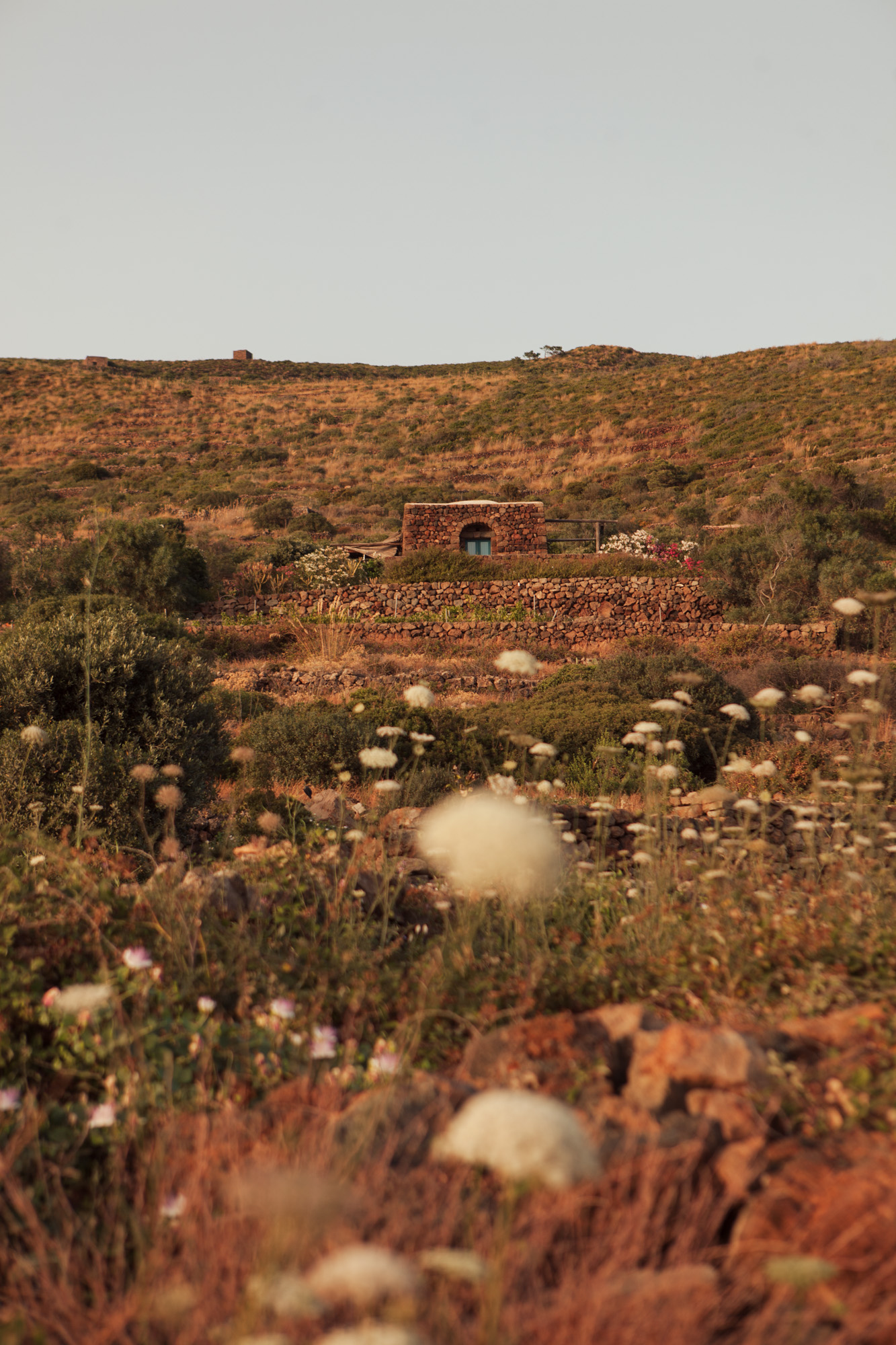
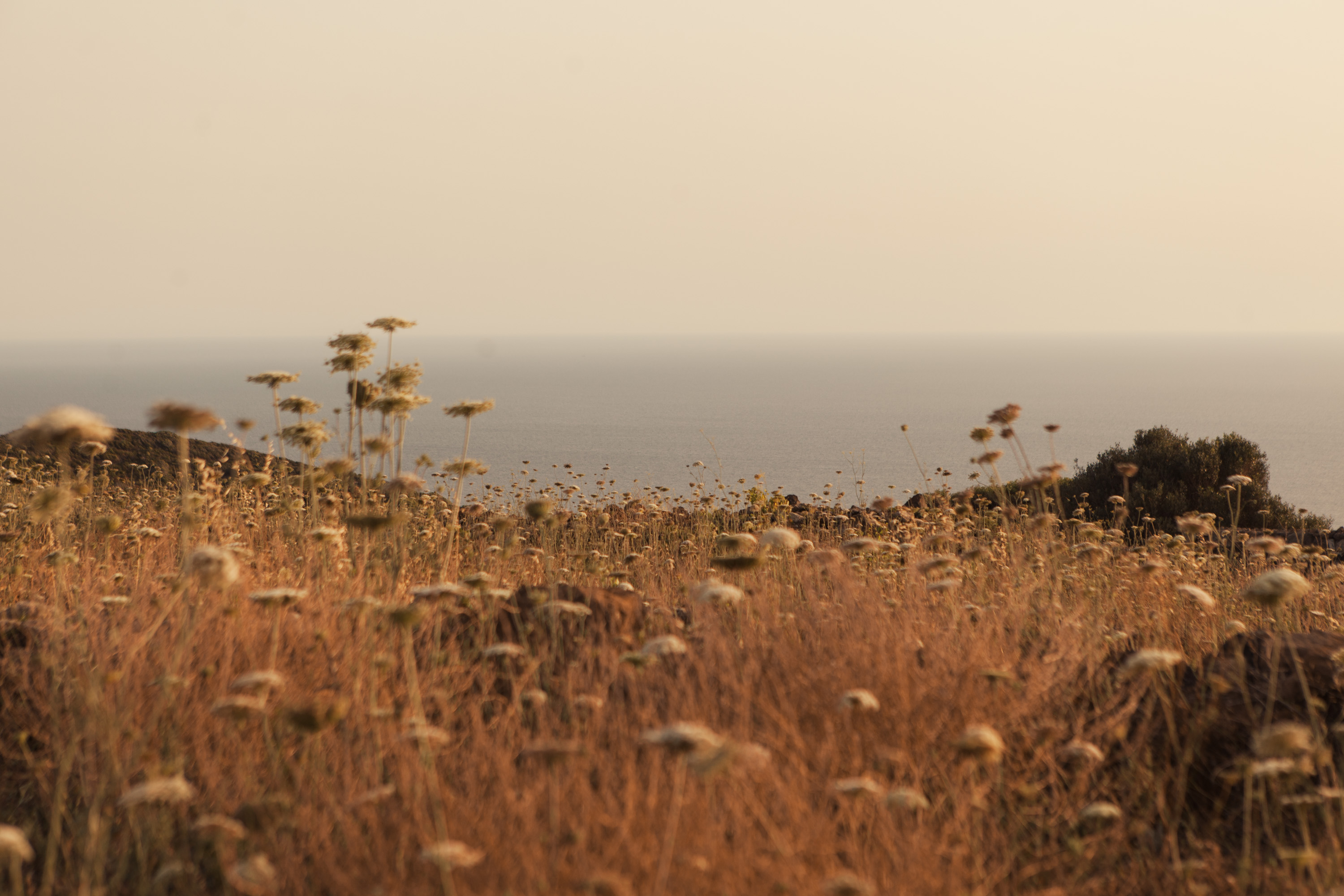

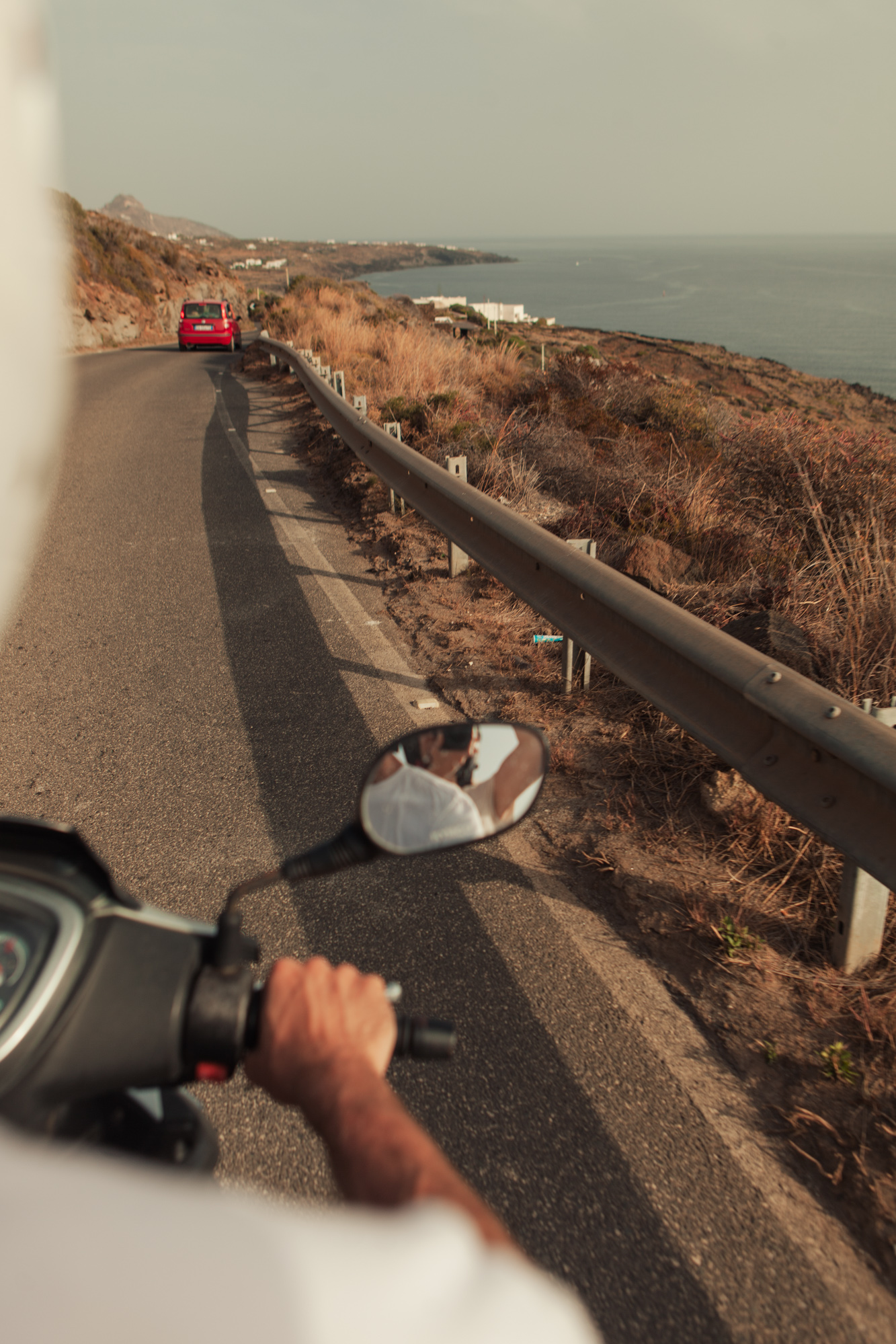
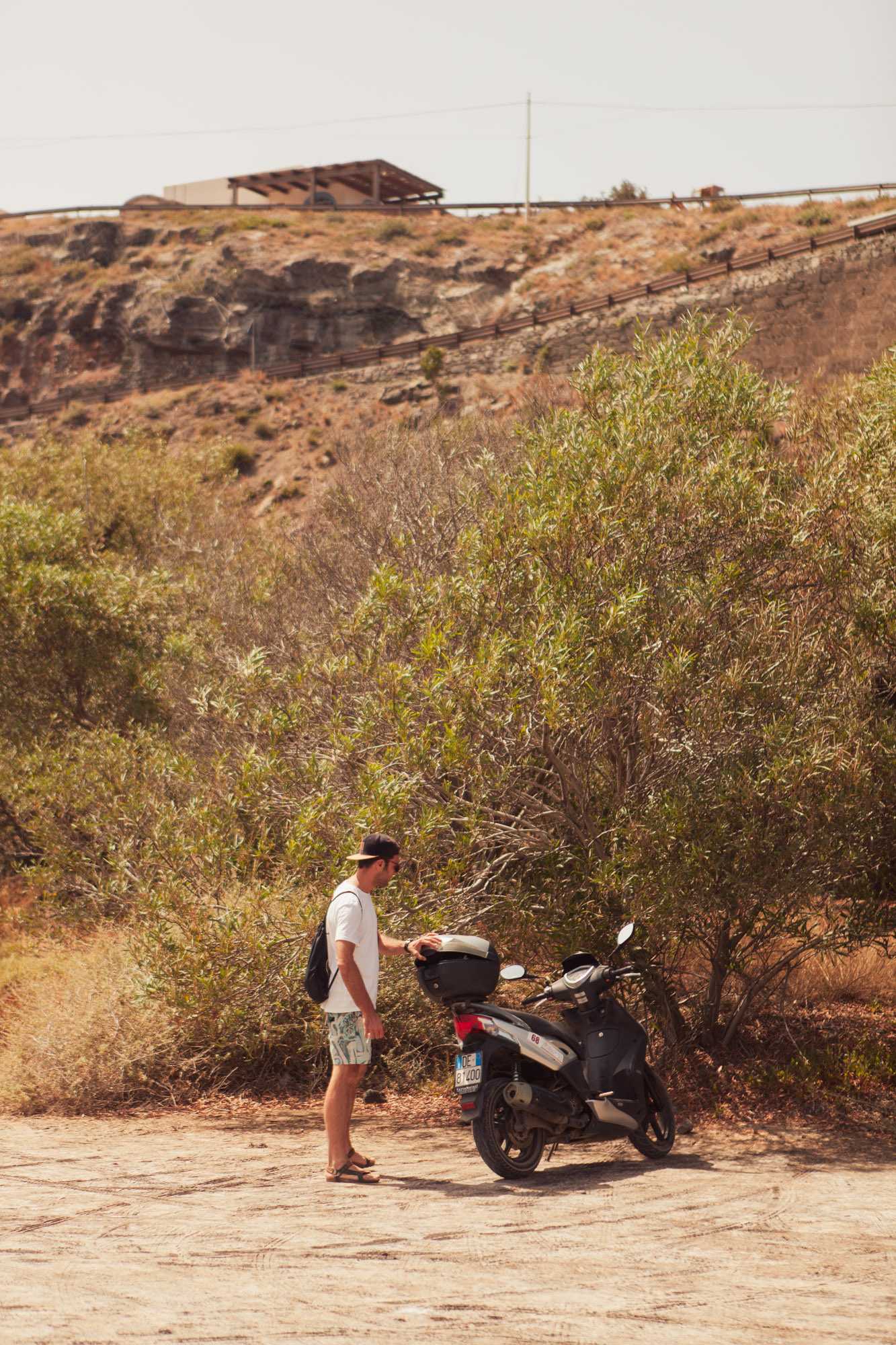
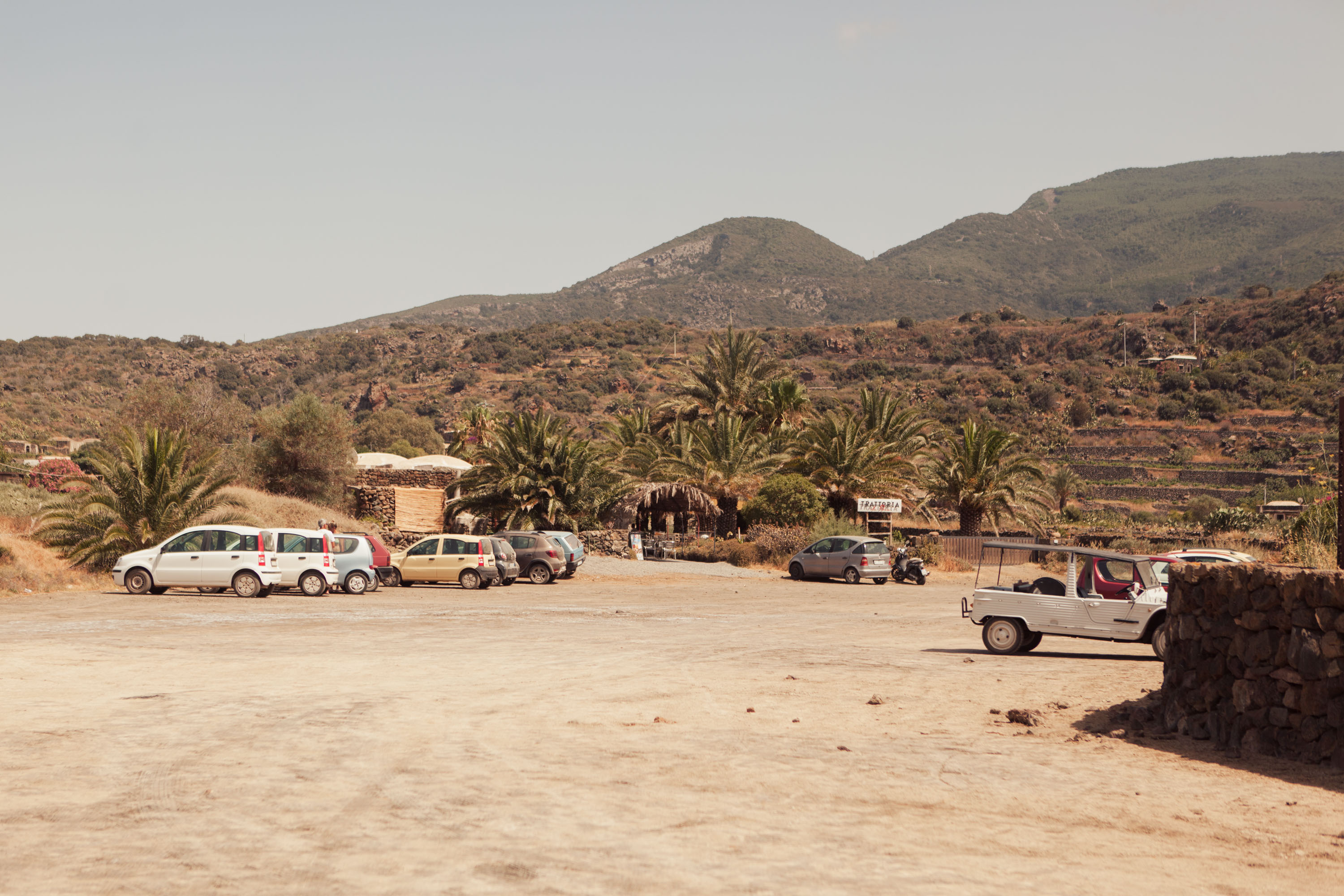
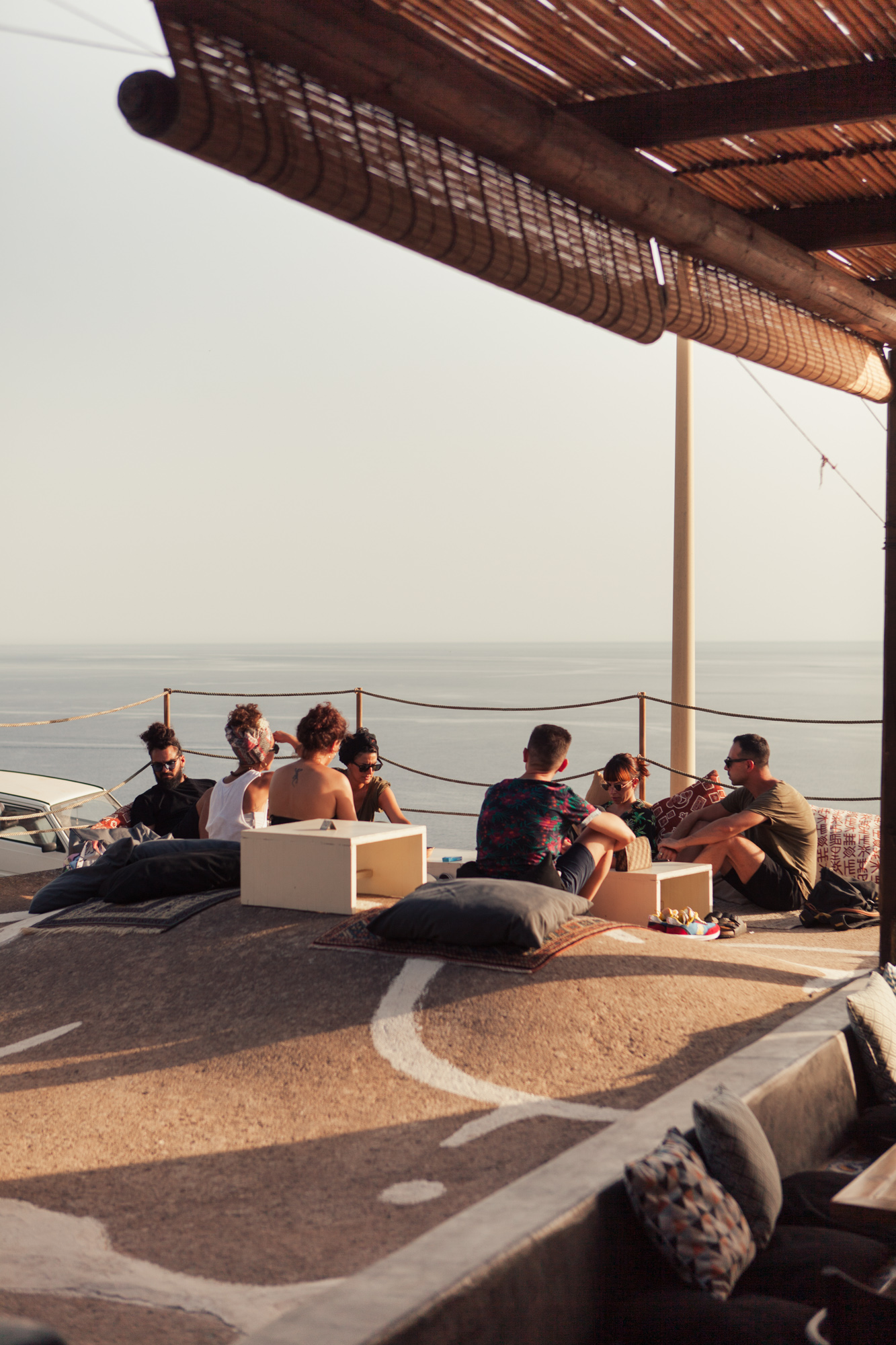 Dispensa Pantesca, Scauri
Dispensa Pantesca, Scauri
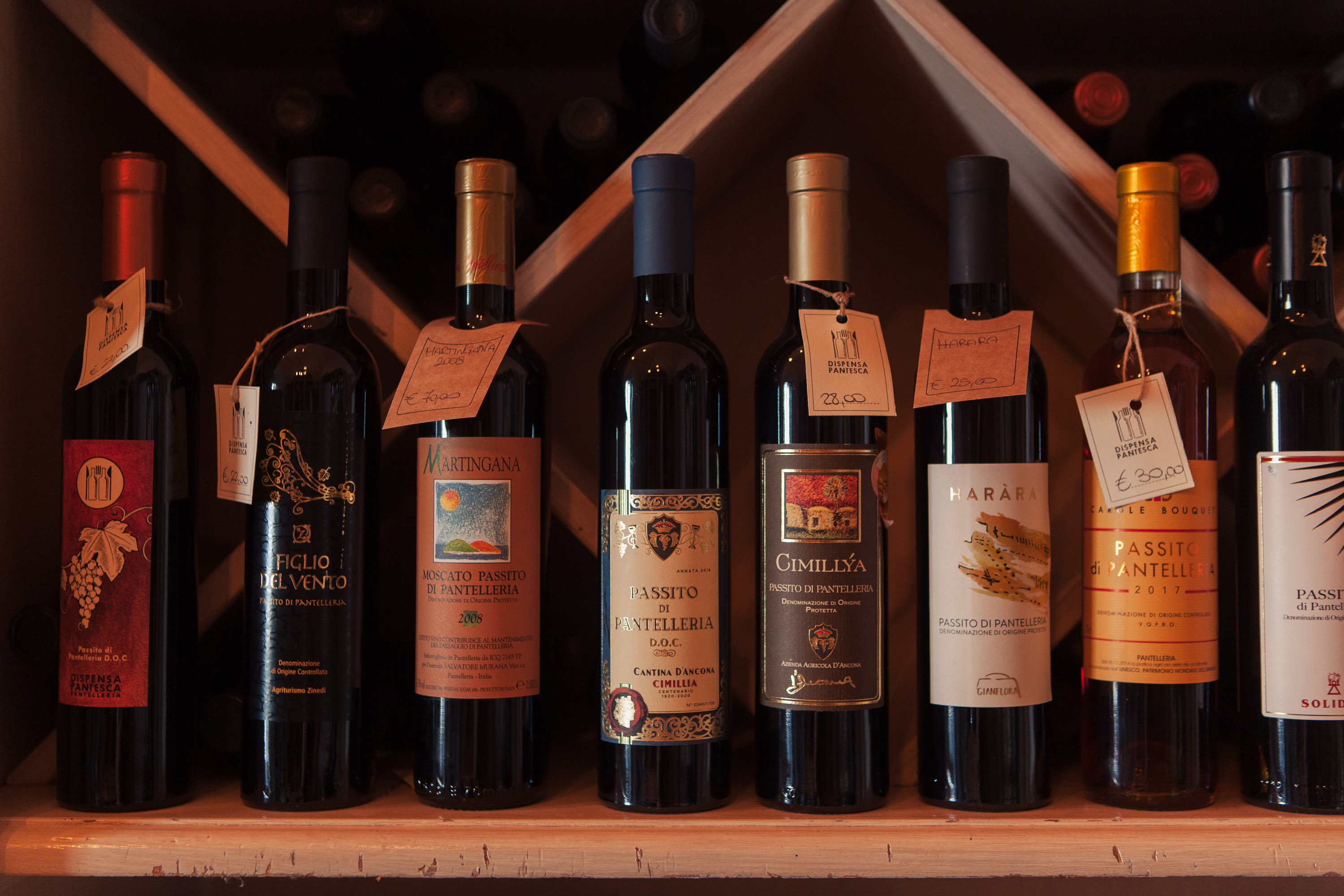

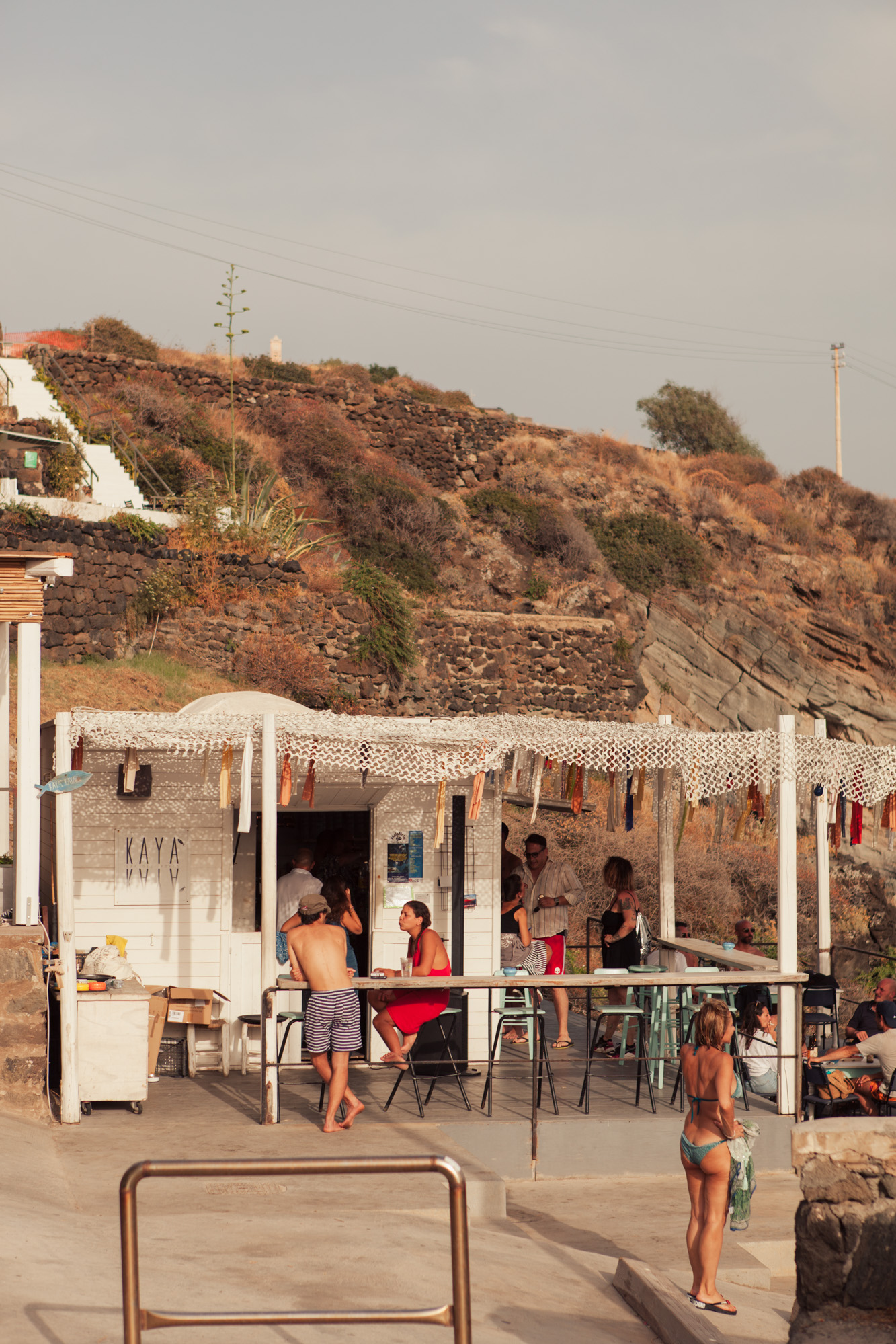
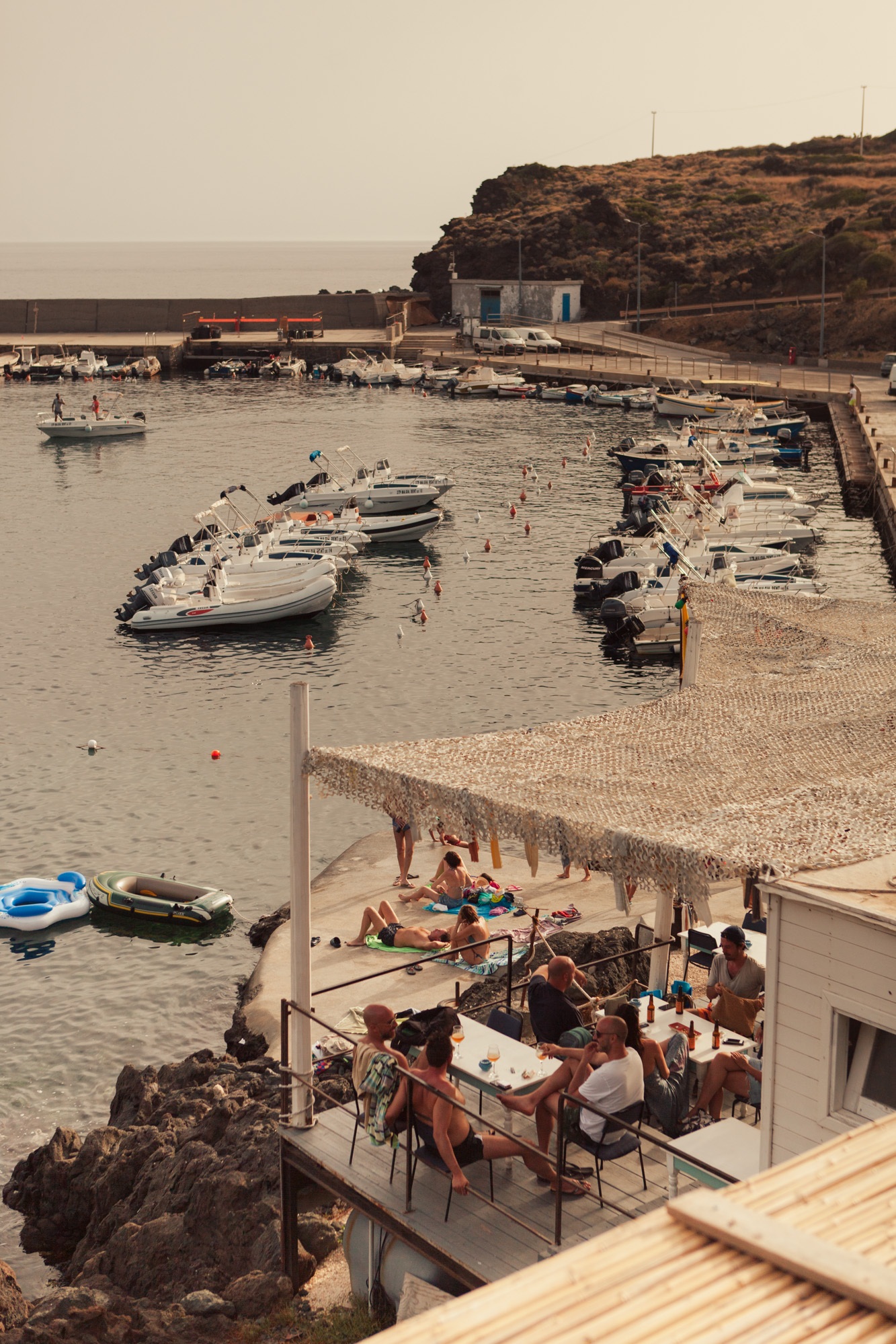
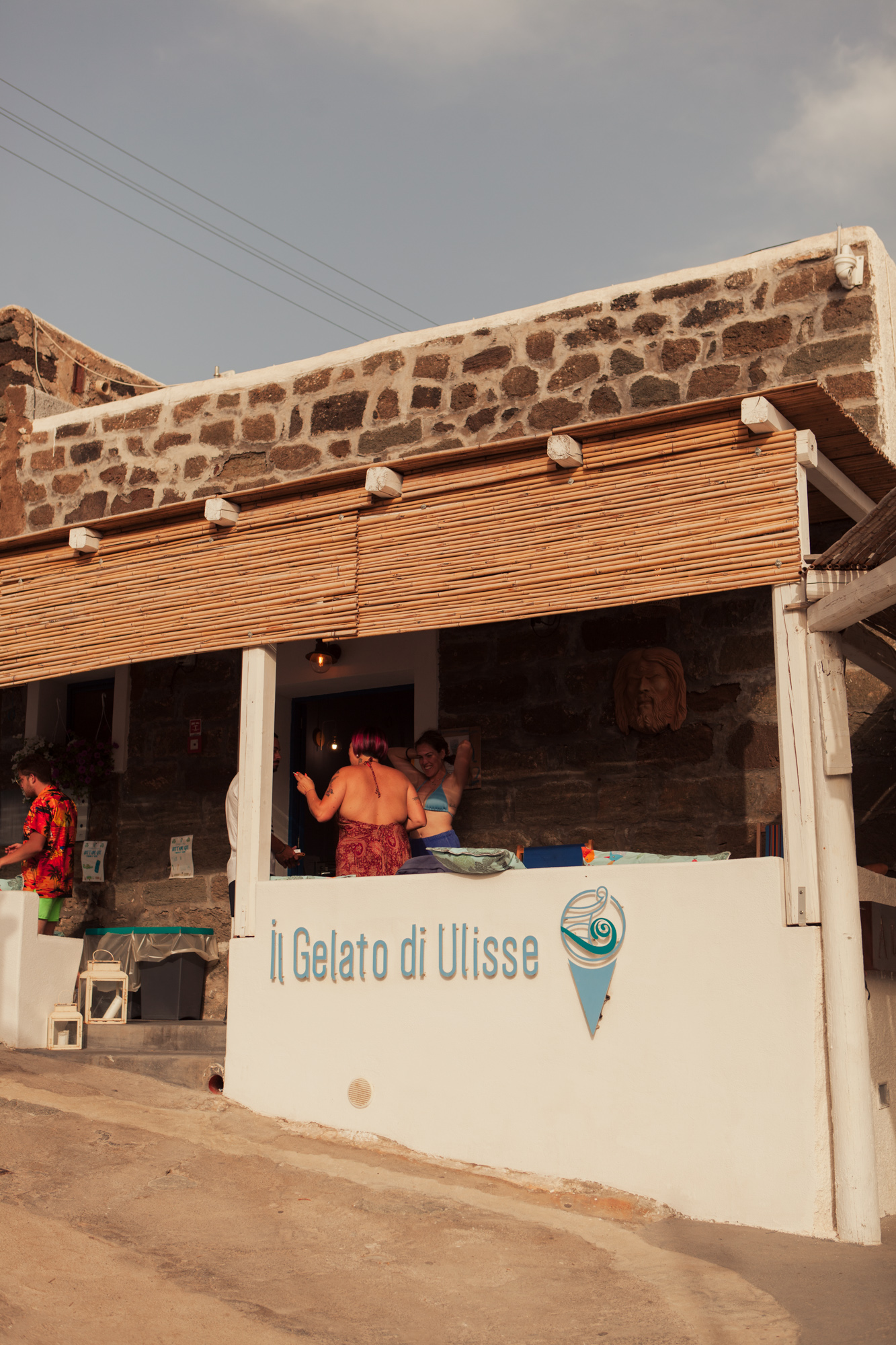
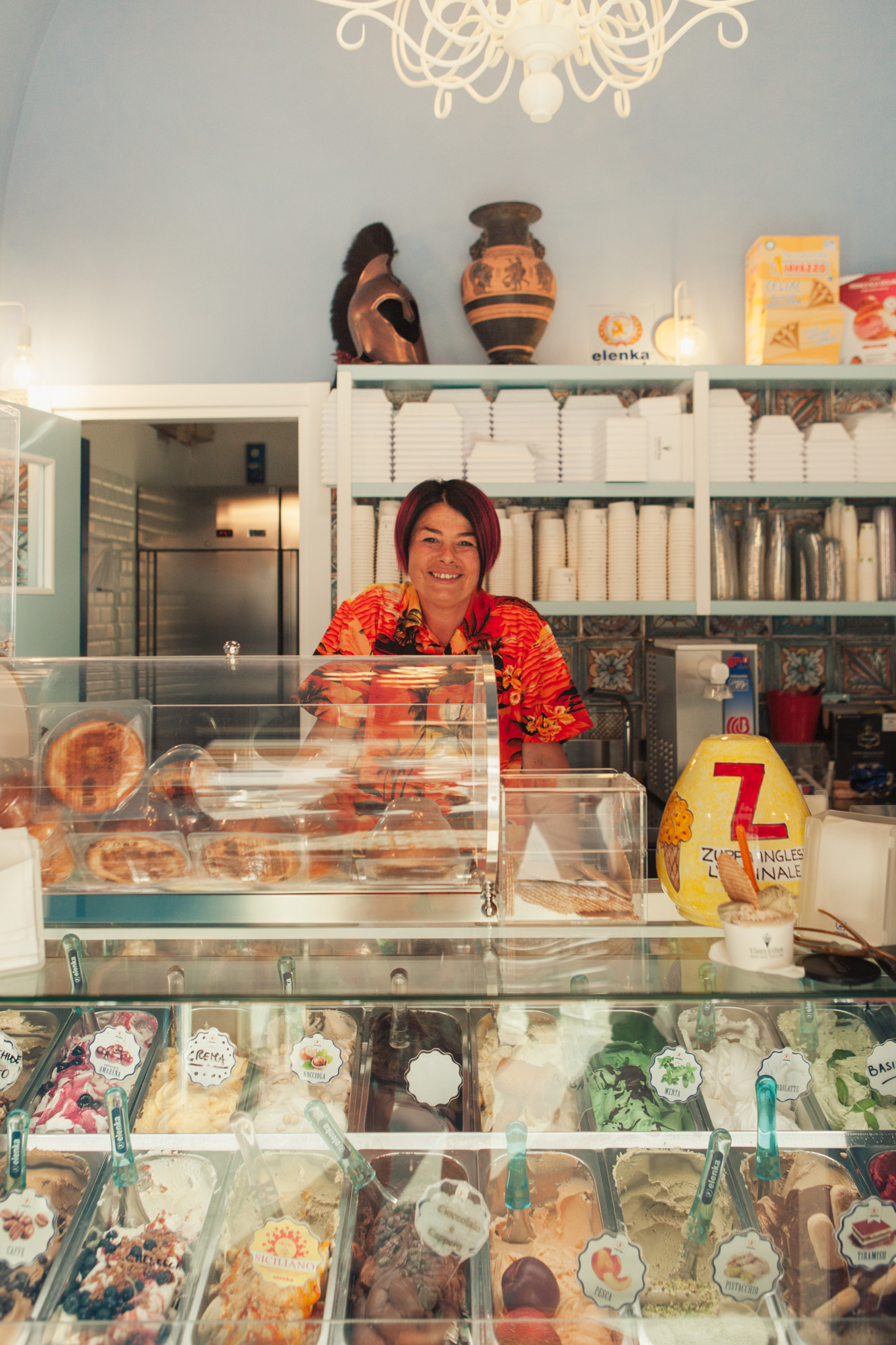
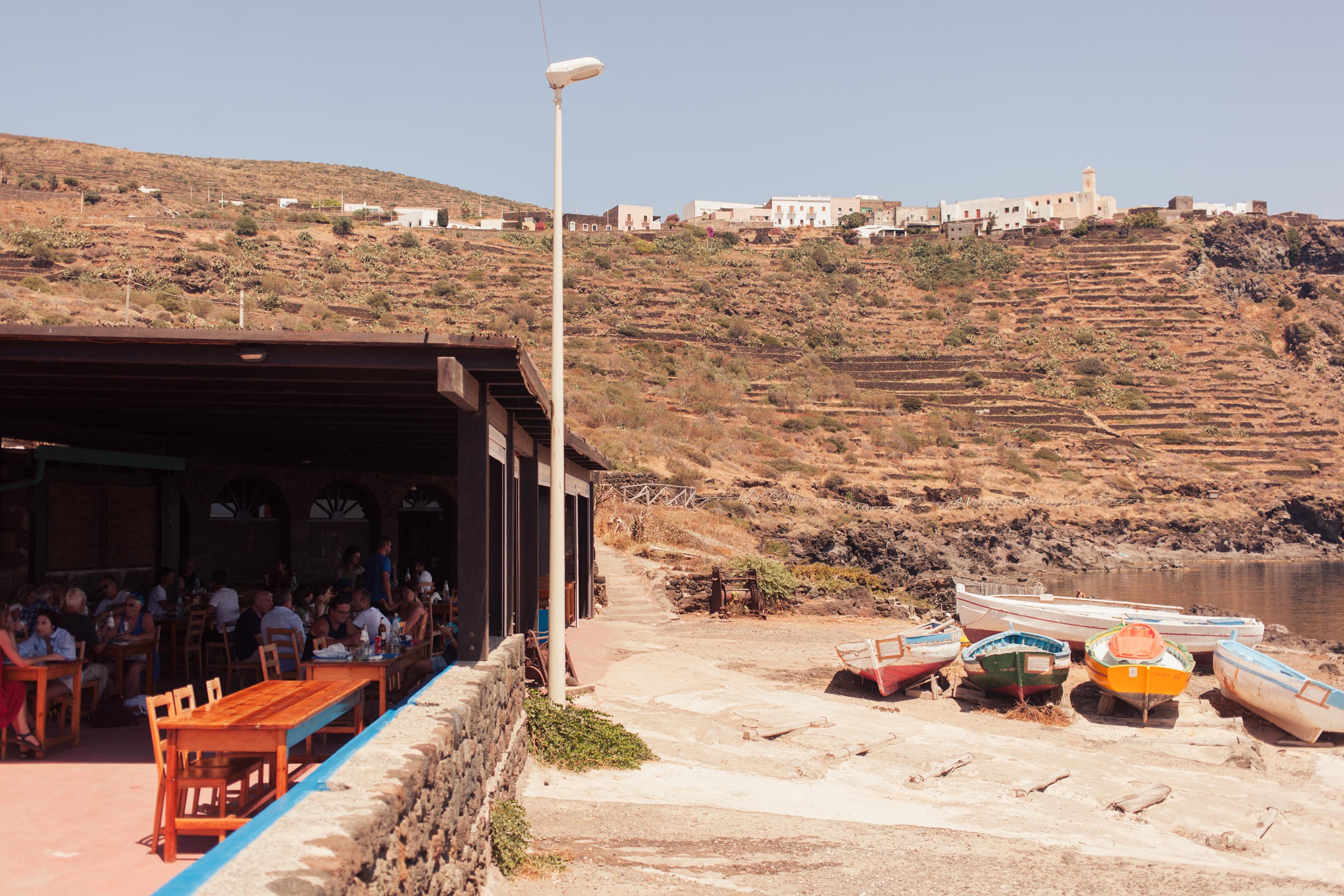
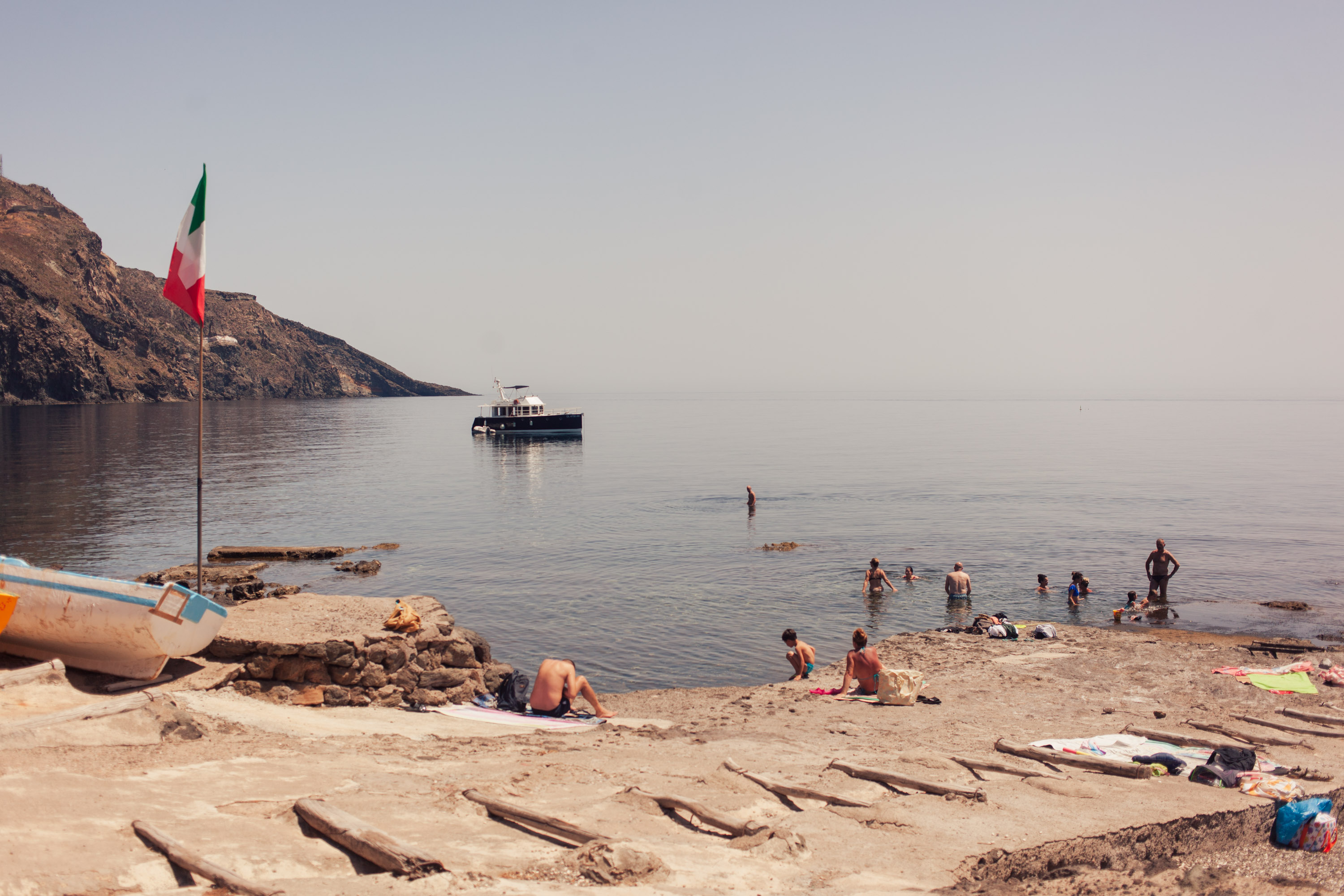

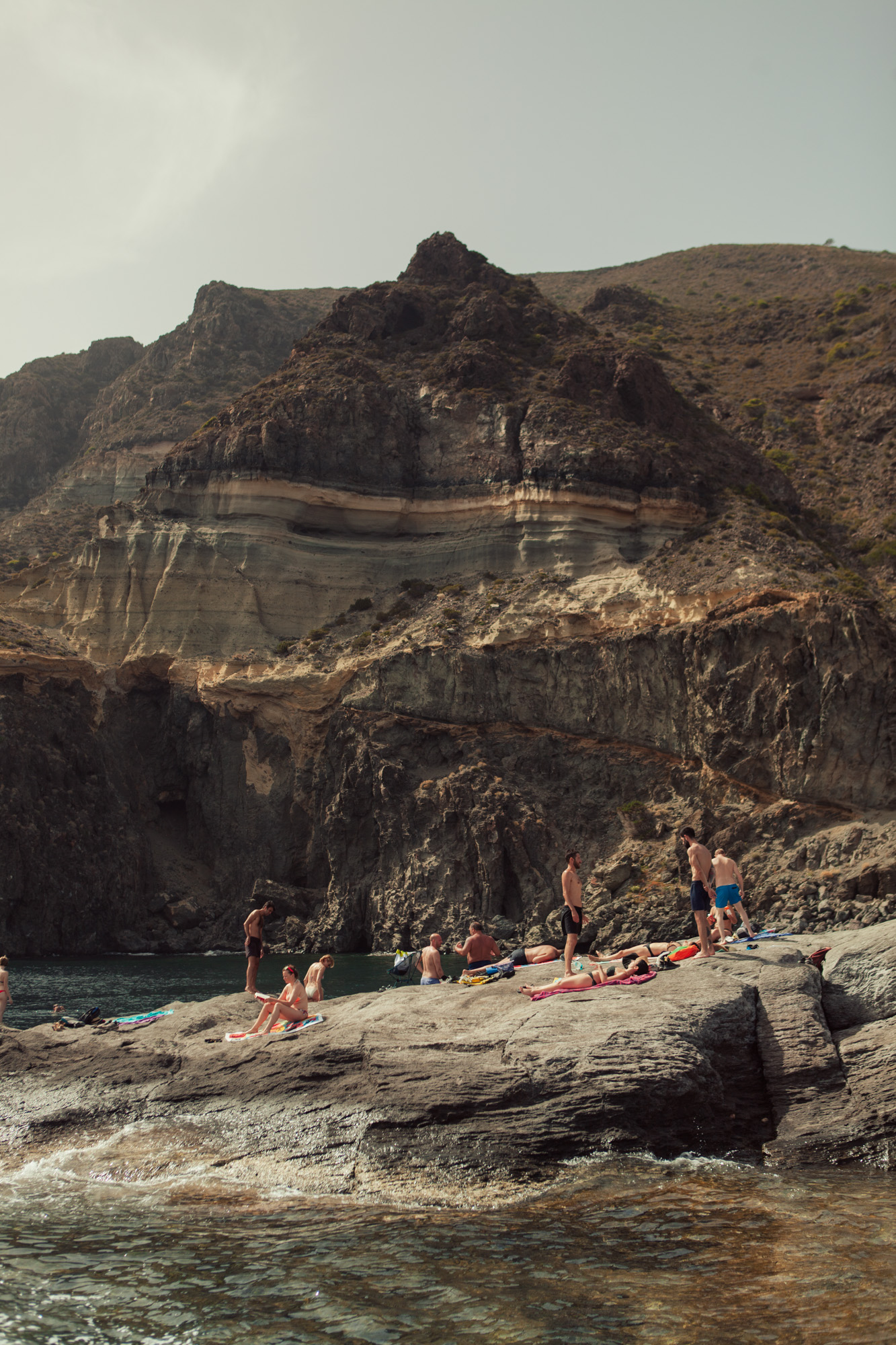
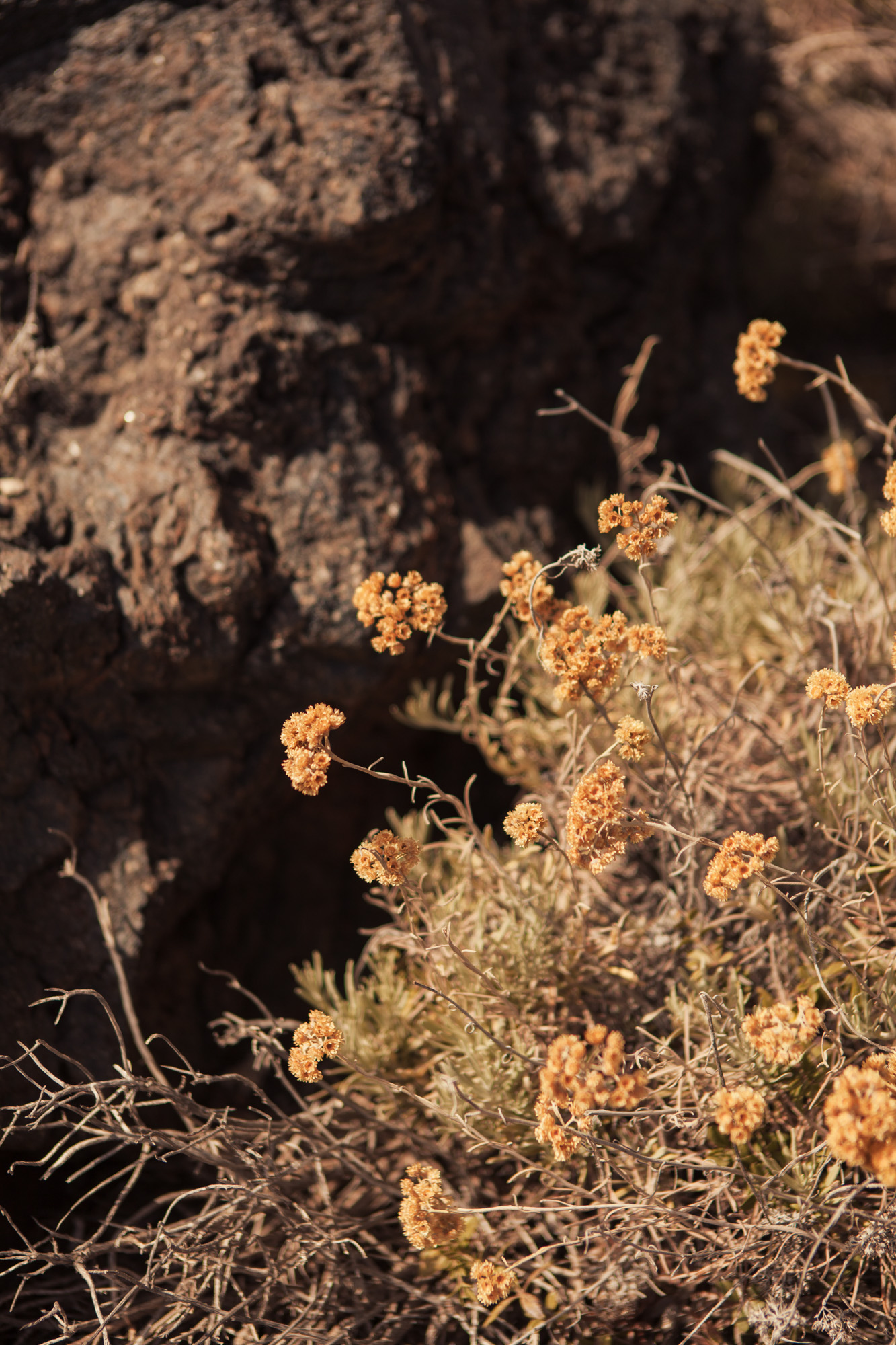
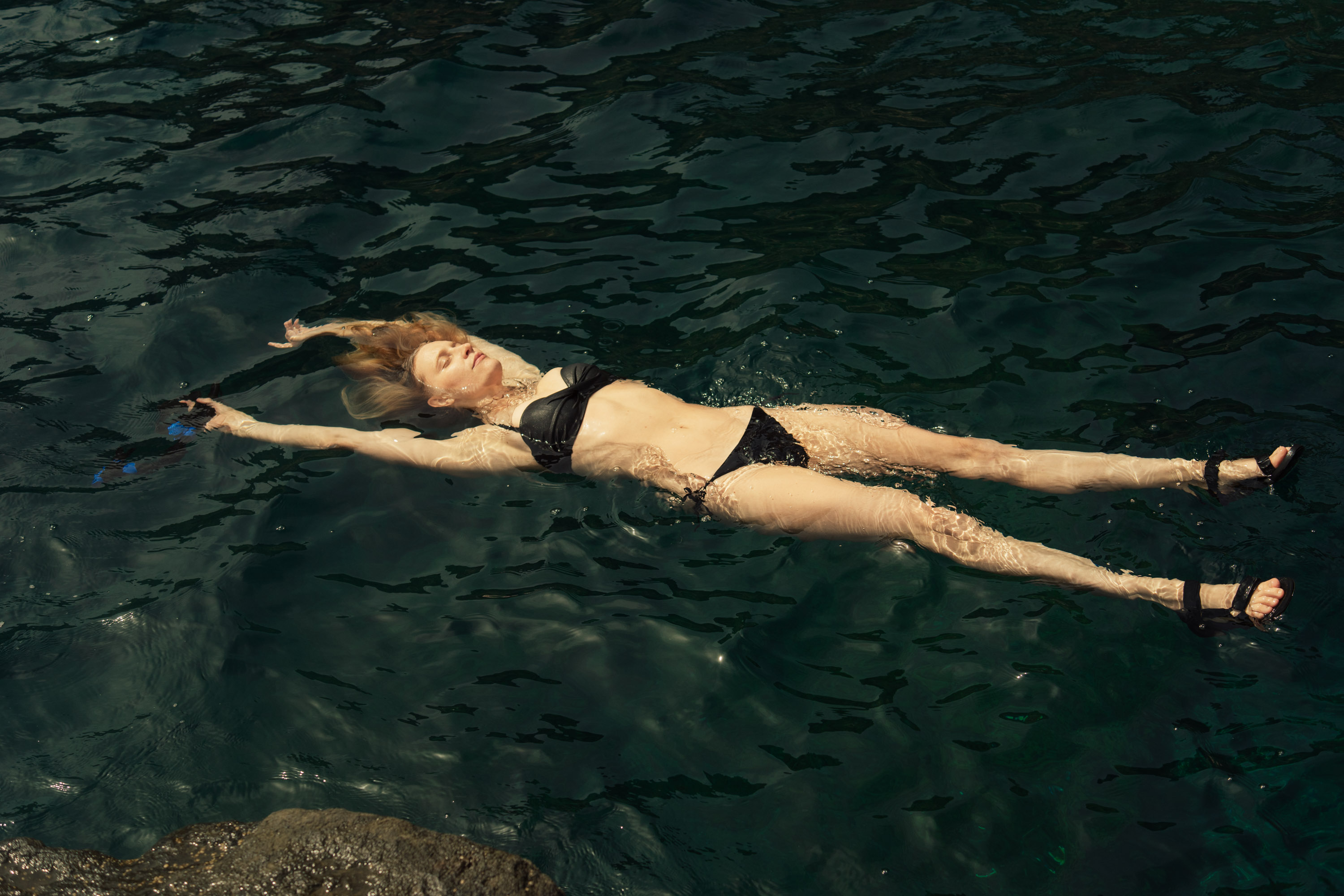
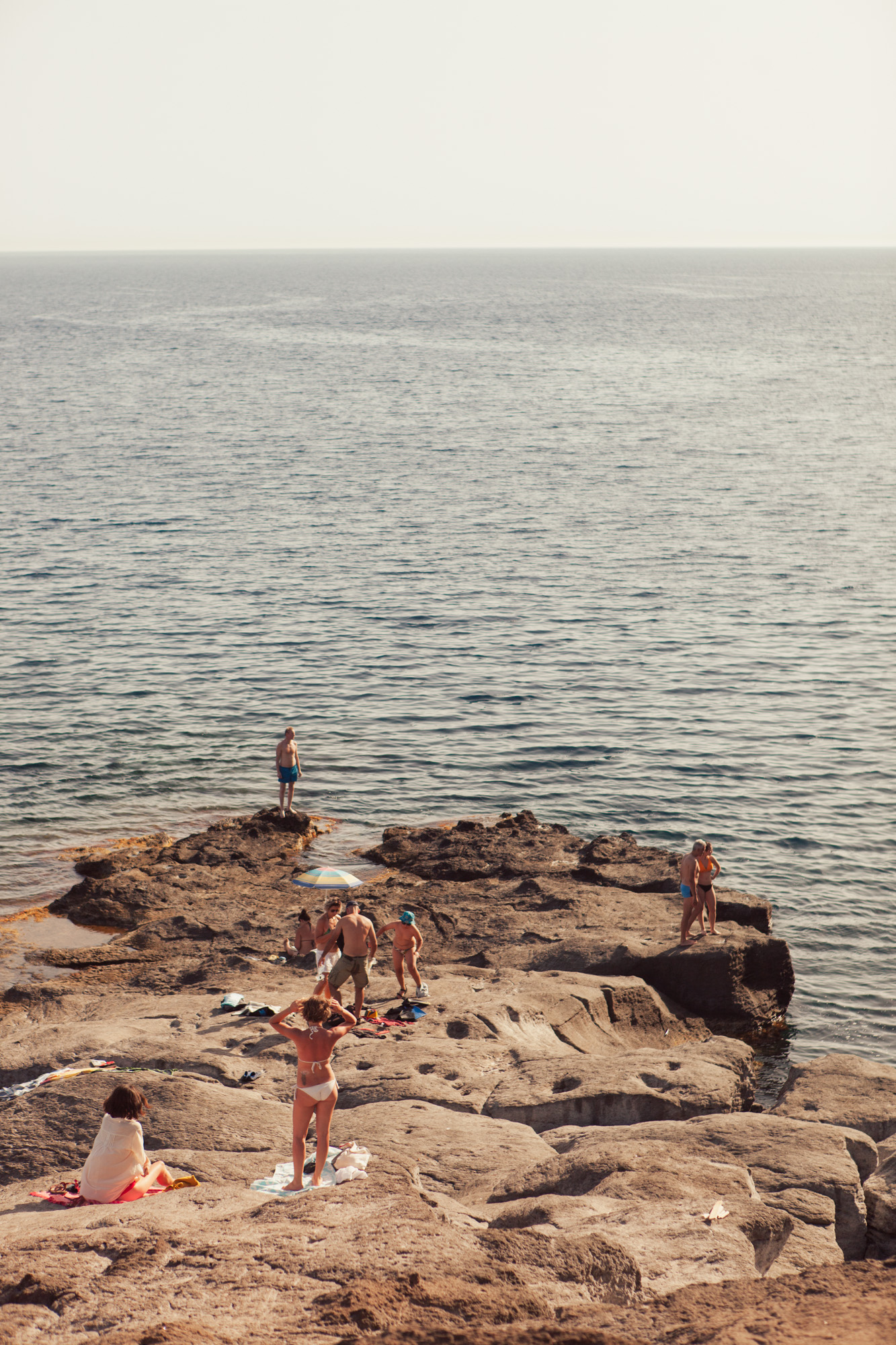 Without sandy beaches, visitors and locals ‘make do’, laying down towels and swimming from the rocks.
Without sandy beaches, visitors and locals ‘make do’, laying down towels and swimming from the rocks.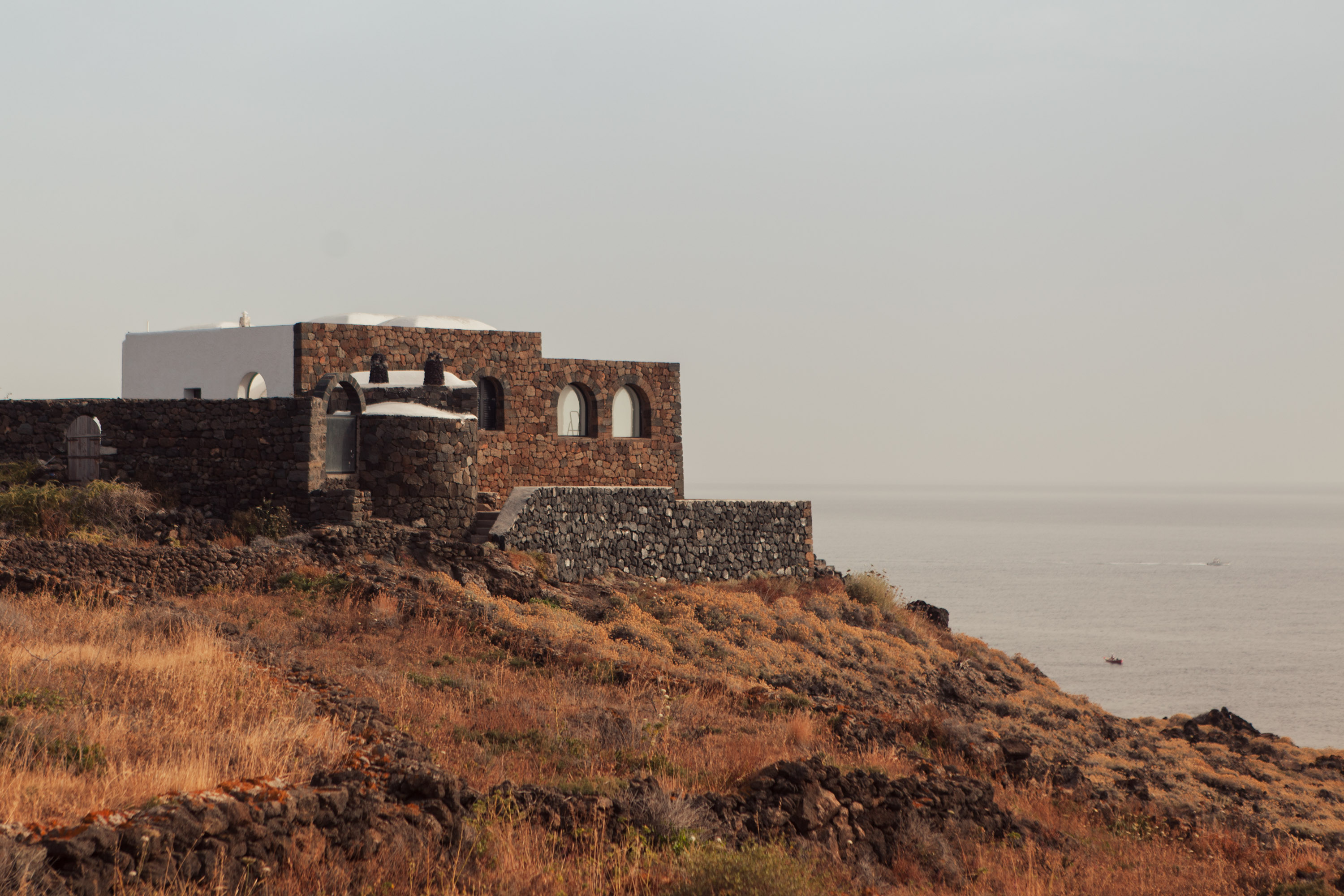
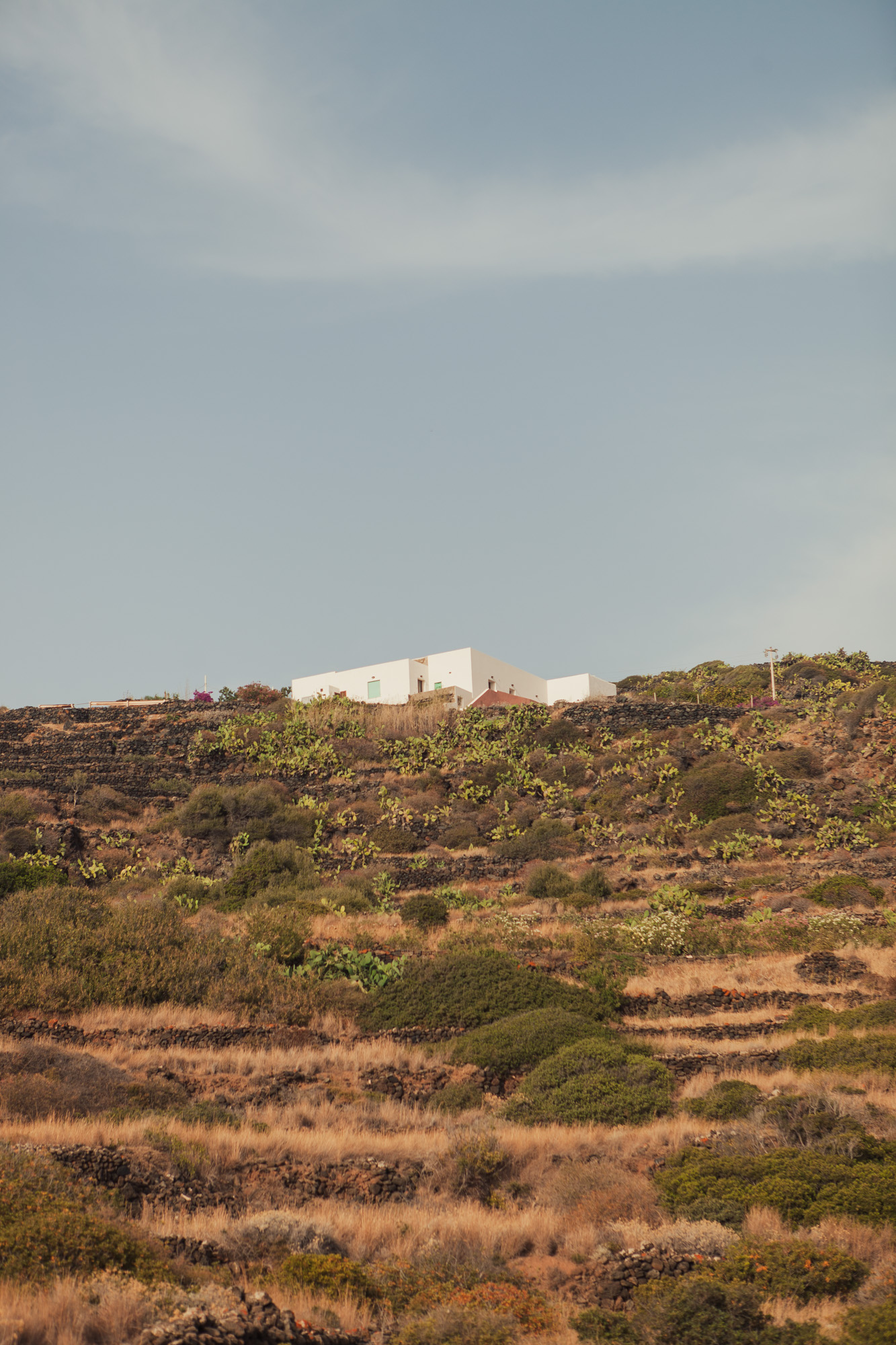
 Pantelleria’s dammusi, unique structures native to the island made from local volcanic stone, fashioned into a dome shape to keep the air naturally cool inside.
Pantelleria’s dammusi, unique structures native to the island made from local volcanic stone, fashioned into a dome shape to keep the air naturally cool inside.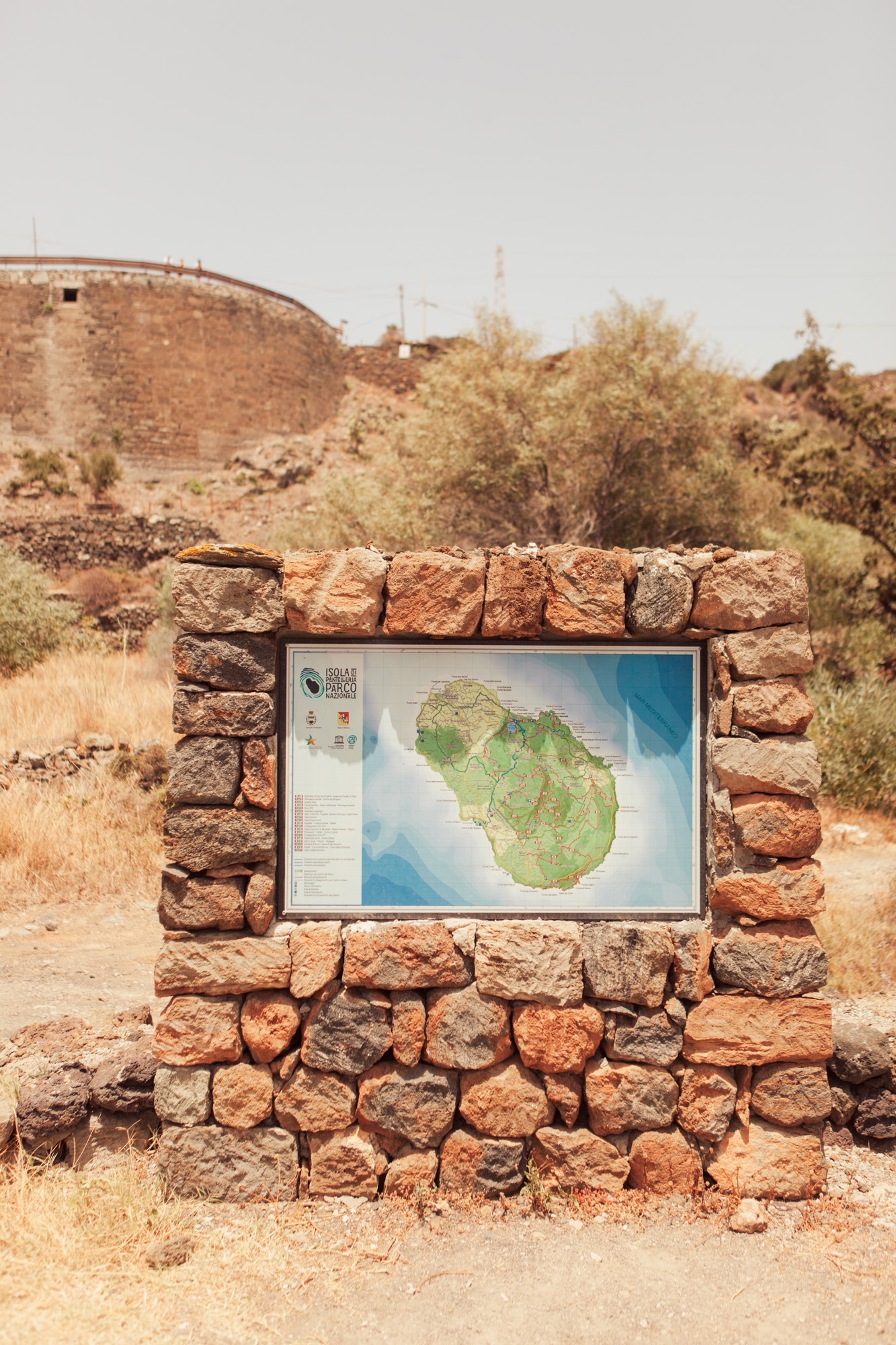


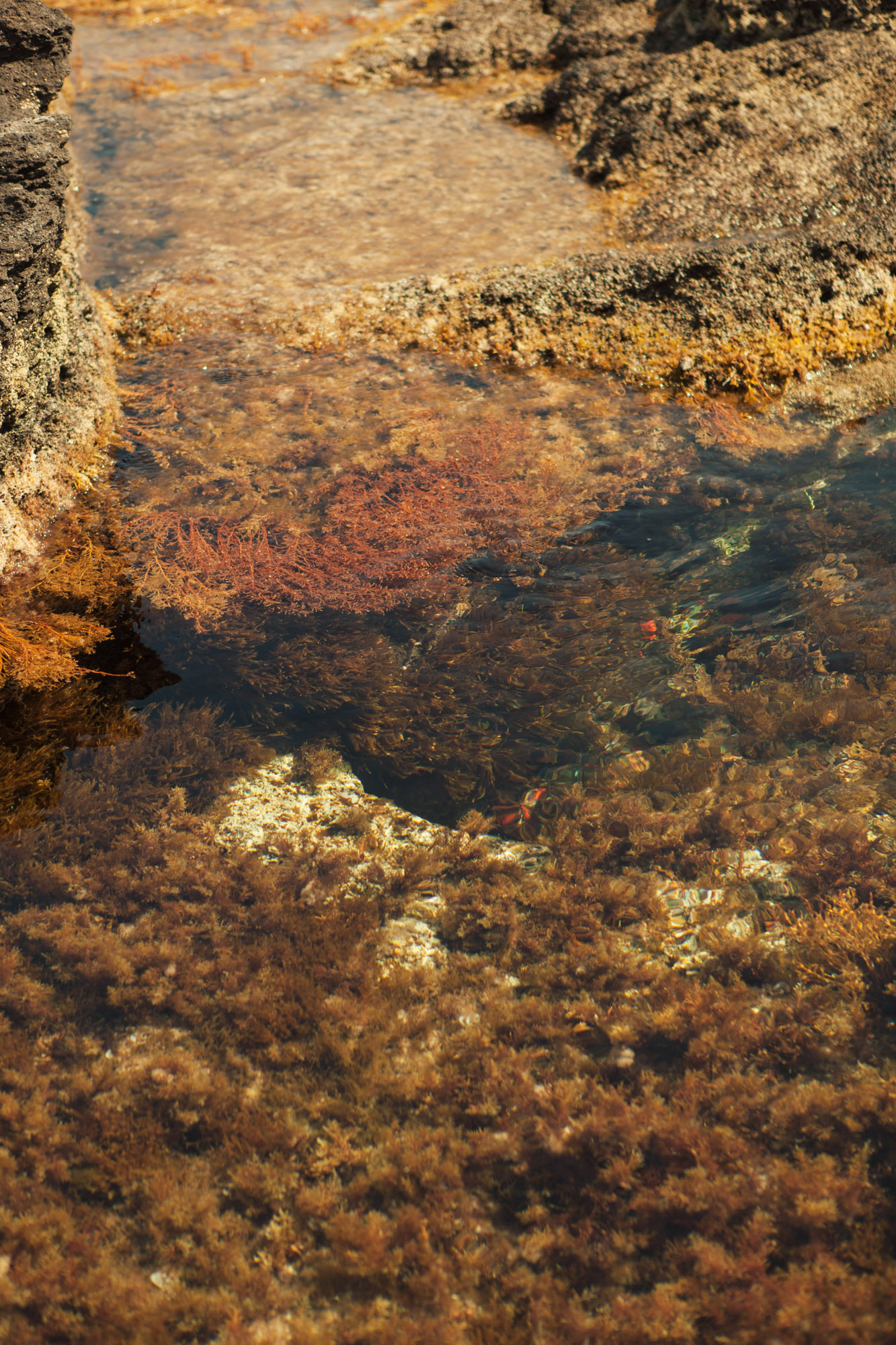

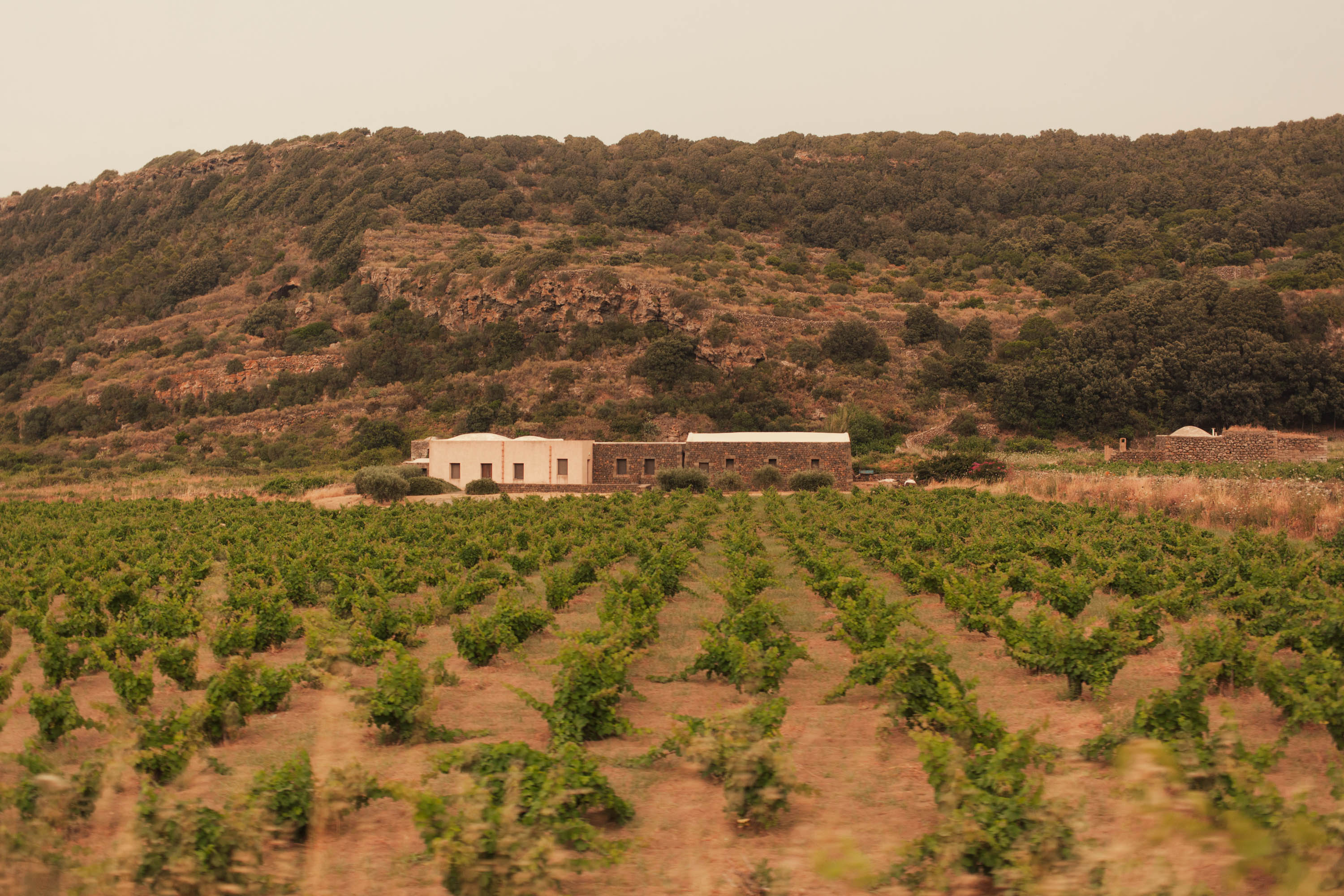 Local grape vines grow different here, low to the ground to avoid the strong winds.
Local grape vines grow different here, low to the ground to avoid the strong winds.